Fly Fishing With Streamers
A thrilling method to reel in some of the biggest fish in the water. This technique, centered around mimicking smaller baitfish, promises both excitement and significant catches for those willing to master it.

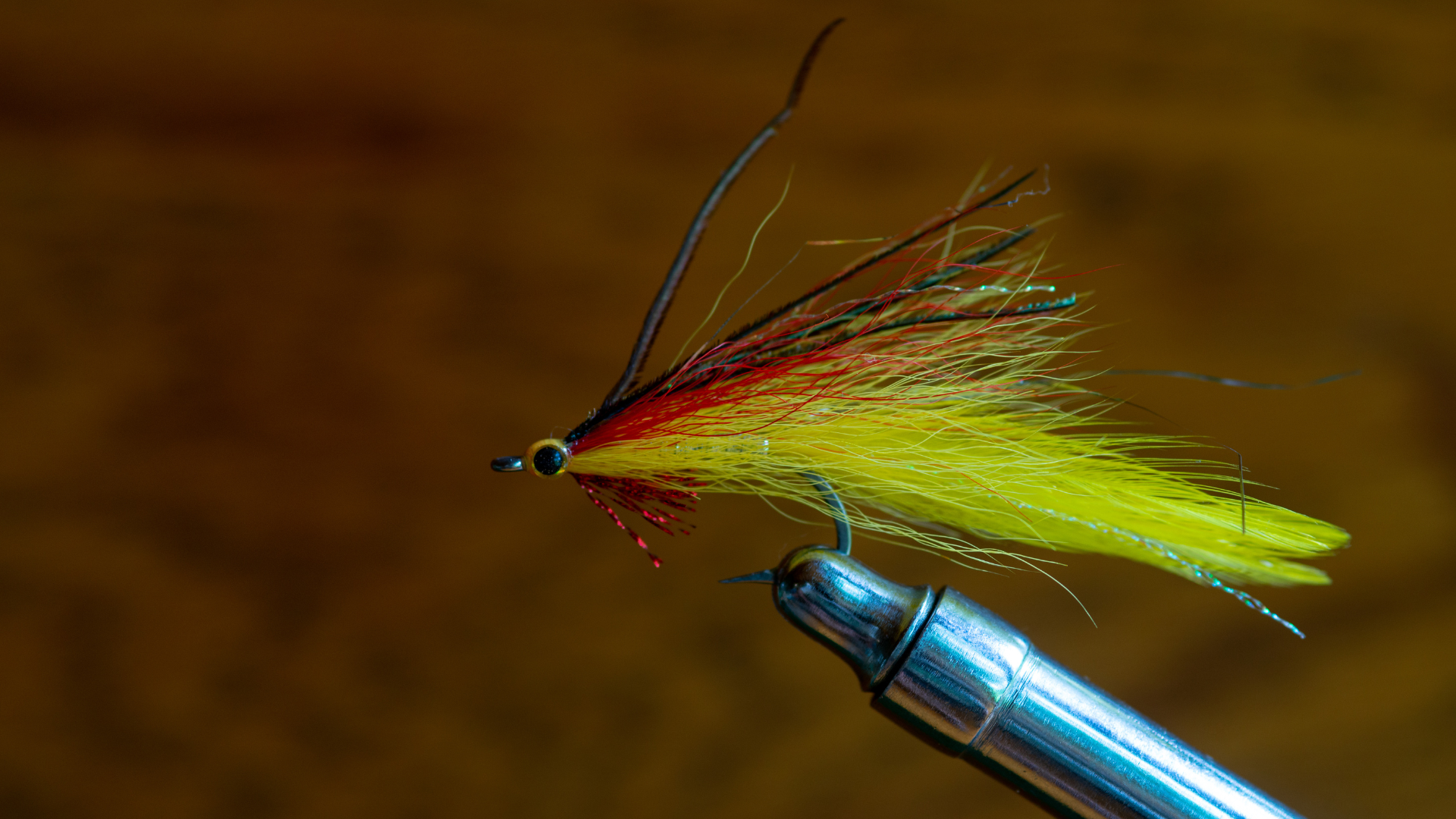
In this guide, we’ll dive into:
-
Understanding Streamer Fishing: The nuances that set it apart.
-
Techniques and Tips: Perfecting your cast and choosing the right fly.
-
Fly Selection and Patterns: Deciphering the best fly fishing flies for different conditions.
-
Targeting Different Fish: Tailoring your approach for various species.
-
Streamer Angling Essentials: Tools and gear to elevate your fishing game.
-
Reading Water: Be able to find exactly where the fish are.
Join us as we unravel the secrets of this method, ensuring you’re well-equipped for your next big catch.
Understanding Streamer Fishing
Streamer fishing is a captivating facet of the broader fly fishing world. But what sets it apart? Let’s dive in.
Mimicking the Baitfish:
At its core, streamer fishing is about imitation. Unlike dry fly fishing, where the goal is to replicate insects on the water’s surface, streamer fishing aims to mimic baitfish or other aquatic creatures. These streamers, often larger and more vibrant, move through the water, attracting attention and enticing larger fish to strike.
Why Streamers?:
Fish, especially the big ones like large trout or aggressive bass, are opportunistic predators. They’re always on the lookout for a substantial meal, and well-presented streamer flies can be irresistible. It’s the movement, size, and appearance of these streamer flies that can trigger a predatory response. When a fish sees a streamer darting or twitching in the water, it often thinks: “meal.”
The Depth Factor:
One of the standout features of streamer fishing is the ability to explore various water depths. While dry flies stay on the surface, streamers can plunge into the depths, reaching spots where big fish lurk. By adjusting your technique, you can make your streamer swim close to the river bed, in mid-water, or just below the surface. This versatility is a game-changer.
Streamer Anglers’ Approach:
Streamer anglers often adopt a more active approach than their dry fly fishing counterparts. The act of casting and retrieving, varying speeds, and occasionally jerking the rod tip to impart a specific action to the streamer makes it an engaging experience. It’s not just about waiting; it’s about enticing, luring, and provoking a bite.
Conditions Matter:
Streamer fishing shines in certain conditions. Murky water after a rain, early mornings, or late evenings when light is low are prime times. In clearer waters, the shadows cast by streamers can be a beacon for fish. Understanding when to use streamers, based on water clarity and light conditions, can significantly up your success rate.
A Word on Equipment:
While you can fish streamers on any fly fishing setup, specific gear can enhance the experience. A heavier fly line, for instance, can help cast larger streamers with ease. Similarly, a sturdier rod can handle the aggressive strikes that streamers often provoke.
In conclusion, streamer fishing offers a dynamic and proactive way to fly fish. It’s about understanding the prey, the predator, and becoming the bridge between them. As you venture into the world of streamer fishing, remember it’s a dance—a dance of imitation, movement, and anticipation.
Techniques and Tips for Fishing Streamers
Streamer fishing is as much about the angler’s skill as it is about the equipment. Mastering the right techniques can be the difference between a good day and a great day on the water. Here are some essential tips to elevate your streamer fishing game.
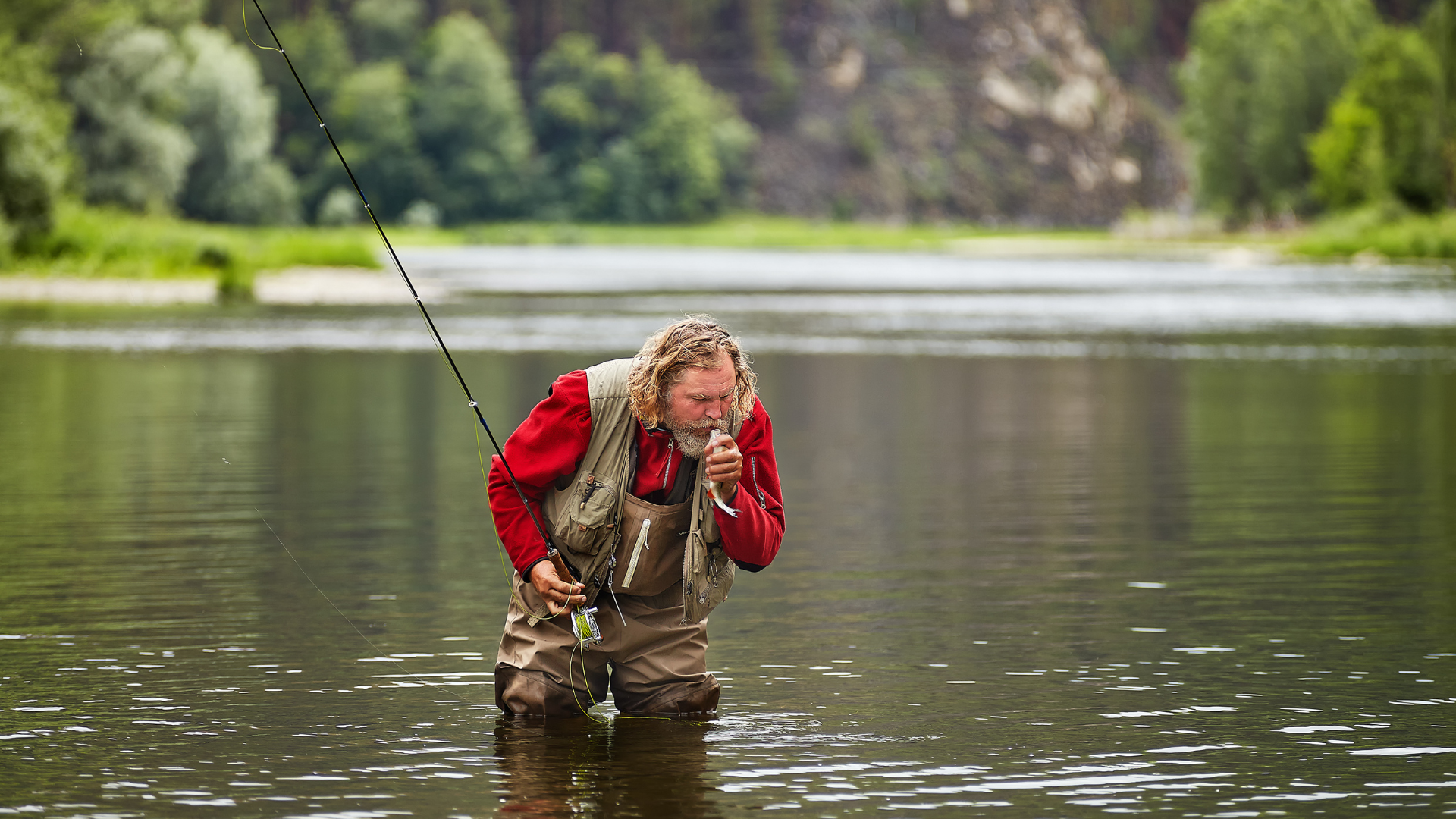

1. Casting Techniques:
-
Cast Upstream: One of the most effective methods is to cast your streamer upstream and let it drift down with the current. As it drifts, retrieve it in short, erratic twitches. This mimics a wounded baitfish, and predators can’t resist.
-
The Swing: Cast across the current and let the streamer swing downstream. As it swings, it will rise in the water column, imitating a fish rising to the surface. This can be especially effective in faster waters.
2. The Retrieve:
-
Vary Your Speed: Don’t just retrieve your streamer at a constant speed. Mix it up. Sometimes a faster retrieve will entice a chase, while other times a slow, methodical retrieve will be more effective.
-
Use the Rod Tip: By moving your rod tip up and down or side to side, you can impart different actions to your streamer. This can make it dart, dive, or even roll – all actions that can trigger a bite.
3. Depth Matters:
-
Sinking Lines: If the fish are deeper, especially in colder conditions, use a sinking line to get your streamer flies down to them.
-
Floating Lines: In shallower waters or when fish are near the surface, a floating line with a weighted streamer can be ideal.
4. Water Conditions:
-
Murky Waters: In cloudy or murky conditions, use brighter or larger streamers. The added visibility can attract fish from further away.
-
Clear Waters: In clear conditions, consider using more natural or subdued colors. The aim is to mimic the natural prey as closely as possible.
5. Streamer Size:
-
Match the Hatch: If you notice larger baitfish in the water, don’t be afraid to use bigger streamers. Conversely, if smaller baitfish are prevalent, match their size.
-
Go Big for Aggressive Fish: Sometimes, especially when targeting aggressive species, using a larger-than-average streamer can provoke reaction strikes.
6. Watch Your Shadows: Fish can be spooked by sudden shadows. Always be aware of the sun’s position and try to cast in a way that your shadow doesn’t fall on the water you’re targeting.
7. Safety First: Streamer fishing often involves casting larger, heavier flies. Always wear protective eyewear, and be aware of your surroundings to avoid hooking trees, or worse, yourself.
In essence, streamer fishing is about observation, adaptation, and experimentation. It’s about reading the water, understanding the fish, and adjusting your techniques accordingly. With these tips in hand, you’re well on your way to becoming a streamer fishing pro.
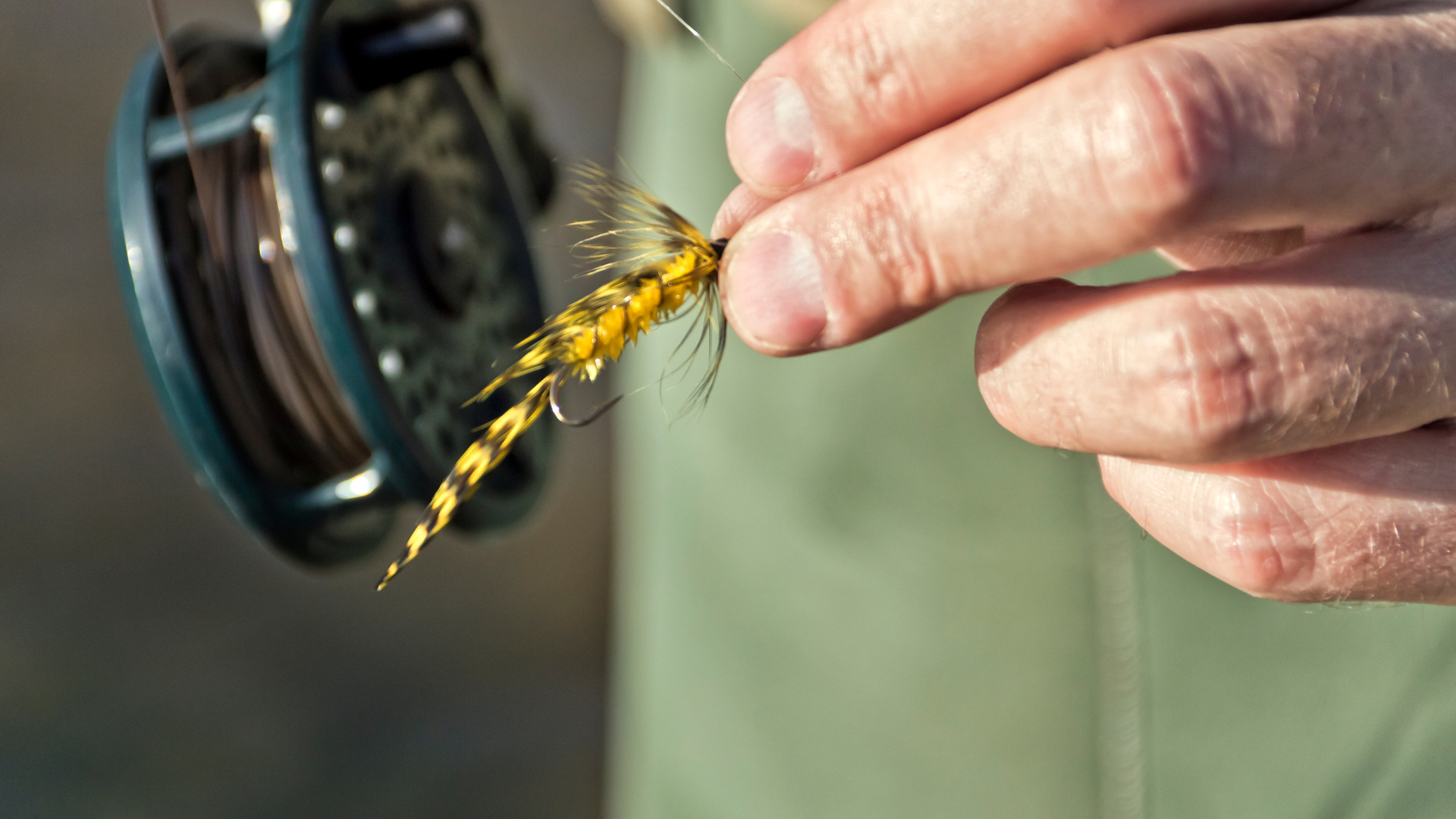
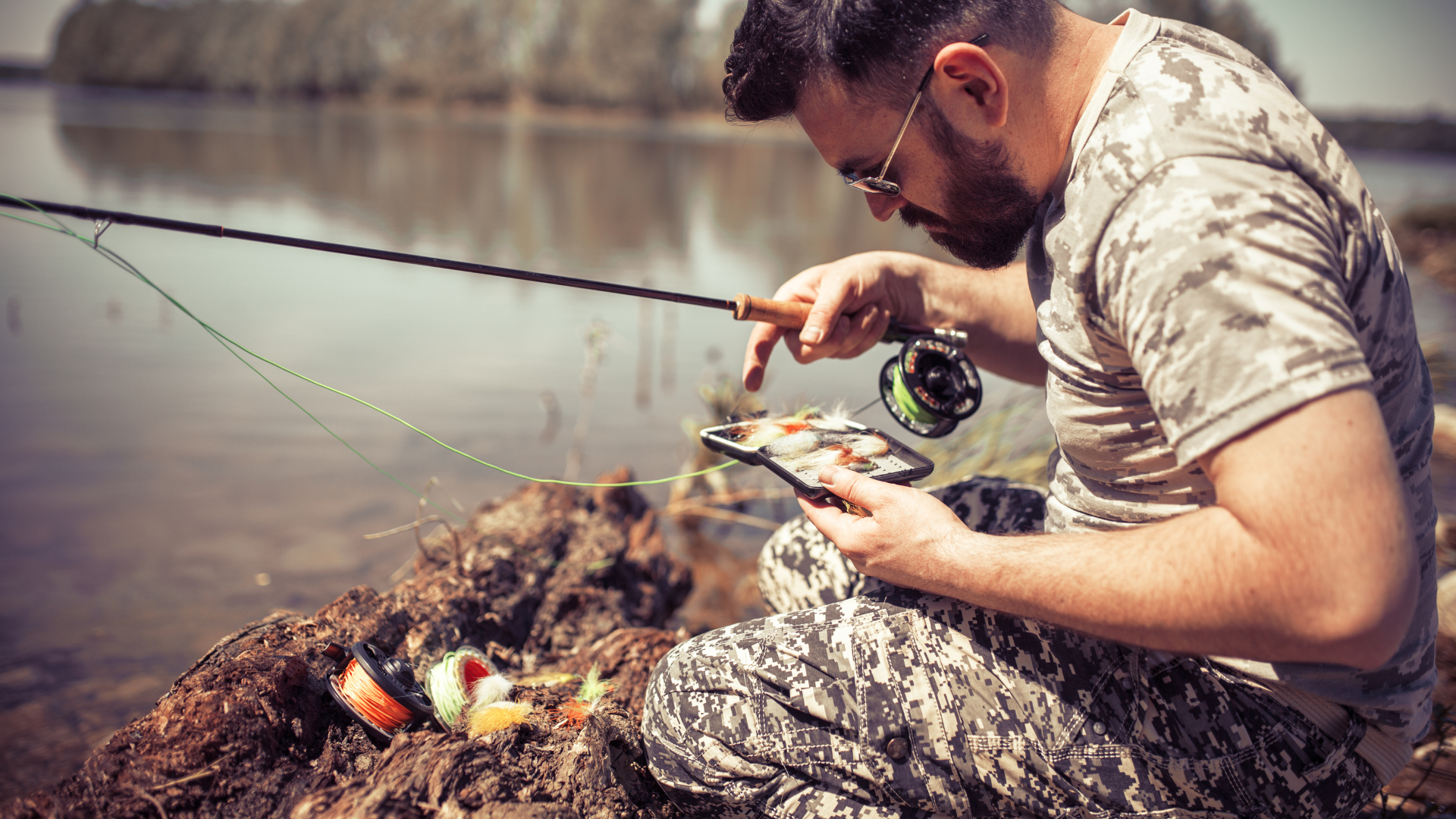
Fly Selection and Patterns for Streamer Fishing
Choosing the right streamer fly is crucial. It can mean the difference between a trophy catch and going home empty-handed. Here’s a guide to help you make the best choice for your streamer fishing adventures.
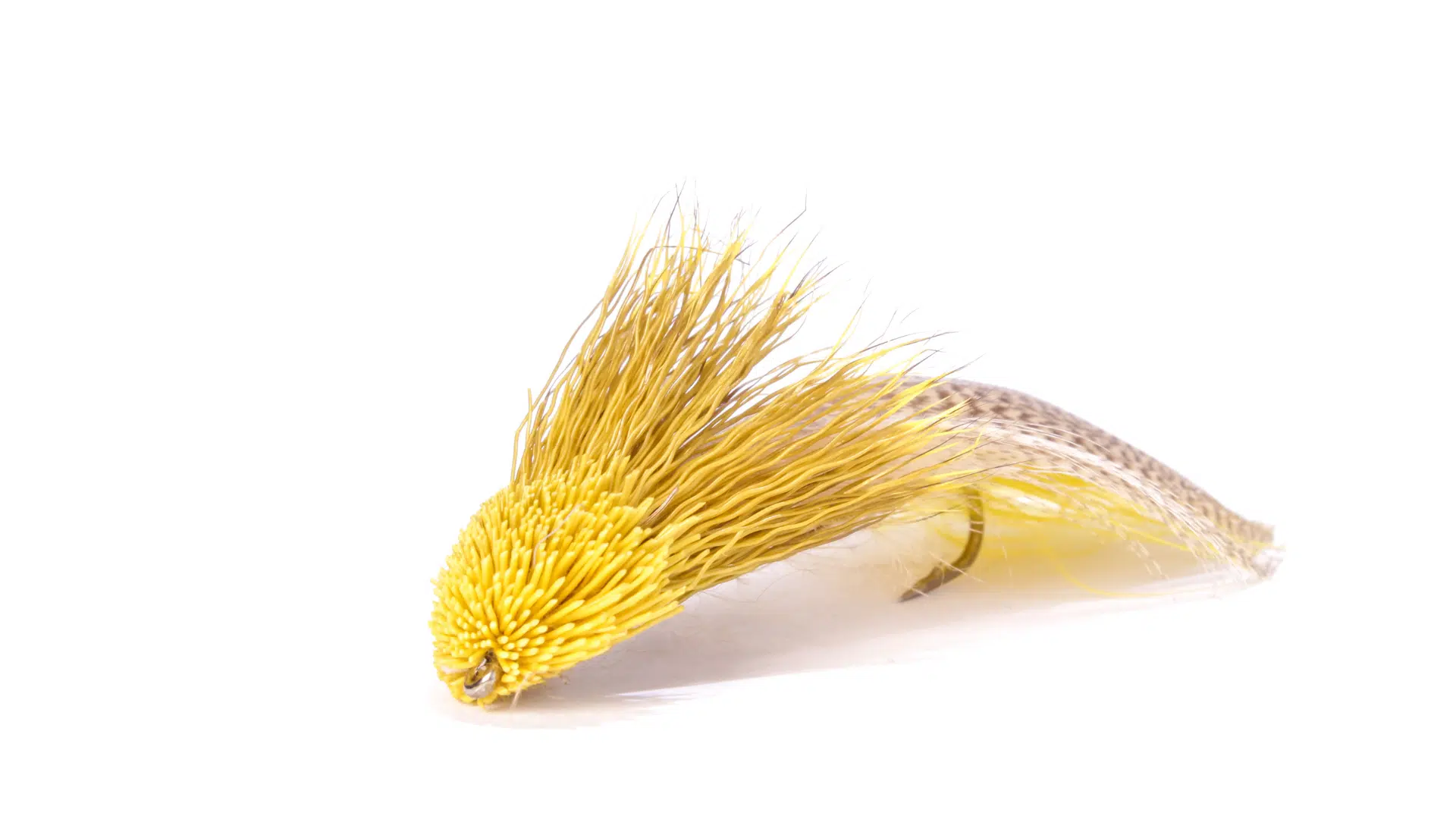
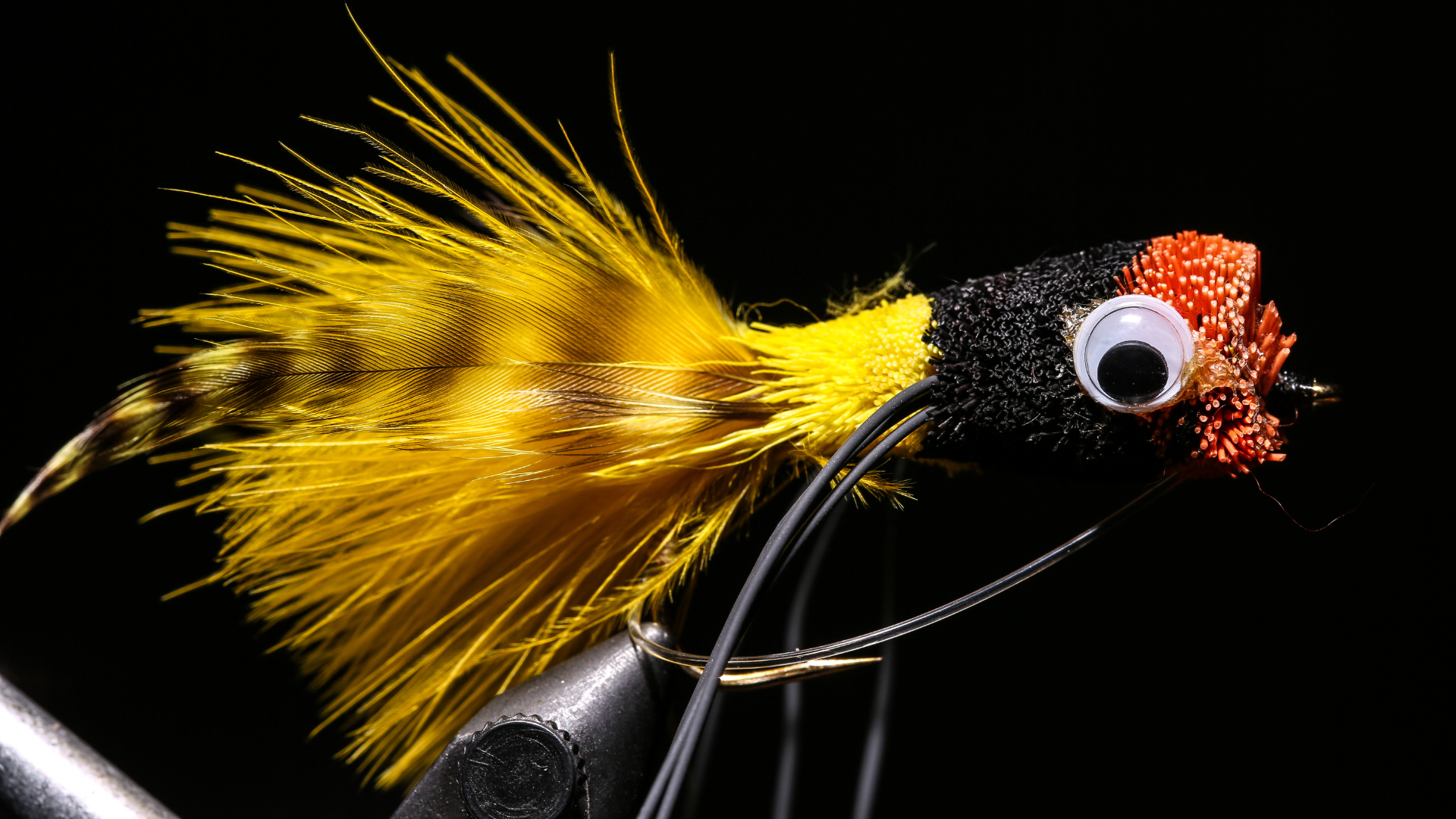
1. Understanding the Basics:
-
Size Matters: The size of your streamer should match the size of the baitfish in the water. If you’re unsure, starting with a medium-sized streamer is a safe bet. Remember, when you fish streamers that are bigger they can attract bigger fish, but they can also intimidate smaller ones.
-
Color Counts: In clear waters, natural colors like browns, greens, and grays can be effective. In murkier conditions, brighter colors like white, yellow, or even fluorescent shades can stand out.
2. Popular Streamer Patterns:
-
Woolly Buggers: A versatile choice, woolly buggers can mimic various prey, from nymphs to small baitfish. They come in various colors, with black, olive, and white being the most popular.
-
Deer Hair Streamers: These are buoyant and can mimic larger prey like mice or frogs. They’re especially effective in waters known for larger predatory fish.
-
Articulated Flies: These have multiple sections, allowing for more movement in the water. They can mimic the darting action of wounded baitfish, making them irresistible to predators.
3. Seasonal Selection:
-
Spring: As waters warm up, fish become more active. Brightly colored streamers can be effective, especially in clearer waters.
-
Summer: With more baitfish around, natural patterns and colors can be more effective. Consider using smaller streamers that mimic juvenile fish.
-
Fall: As fish bulk up for winter, they can become more aggressive. Larger streamers, especially those that mimic wounded fish, can be very effective.
4. Water Depth and Streamer Weight:
-
Shallow Waters: In shallower waters, lighter streamers that can be retrieved quickly without snagging the bottom are ideal.
-
Deeper Waters: Heavier, weighted streamers can get down to where the fish are. Consider streamers with bead heads or those tied with lead wire.
5. Specialty Streamers:
-
Mouse Patterns: Perfect for night fishing, these can attract big brown trout and other large fish looking for a substantial meal.
-
Jig Streamers: These have a jigging action that can be irresistible to fish, especially in deeper waters.
6. Always Observe and Adapt: While having a variety of streamers is essential, it’s equally crucial to observe the water and the fish’s behavior. If one pattern isn’t working, don’t hesitate to switch it up. Sometimes, even a slight change in color or size can make all the difference.
In conclusion, your fly selection can significantly influence your success in streamer fishing. By understanding the basics, knowing popular patterns, and being willing to adapt based on conditions, you’ll be well-equipped to make the best choices for any streamer fishing scenario.
Streamer Angling for Different Fish
Streamer fishing is a versatile technique, but its effectiveness can vary depending on the species you’re targeting. Here’s a guide to help you tailor your streamer angling approach for different fish.
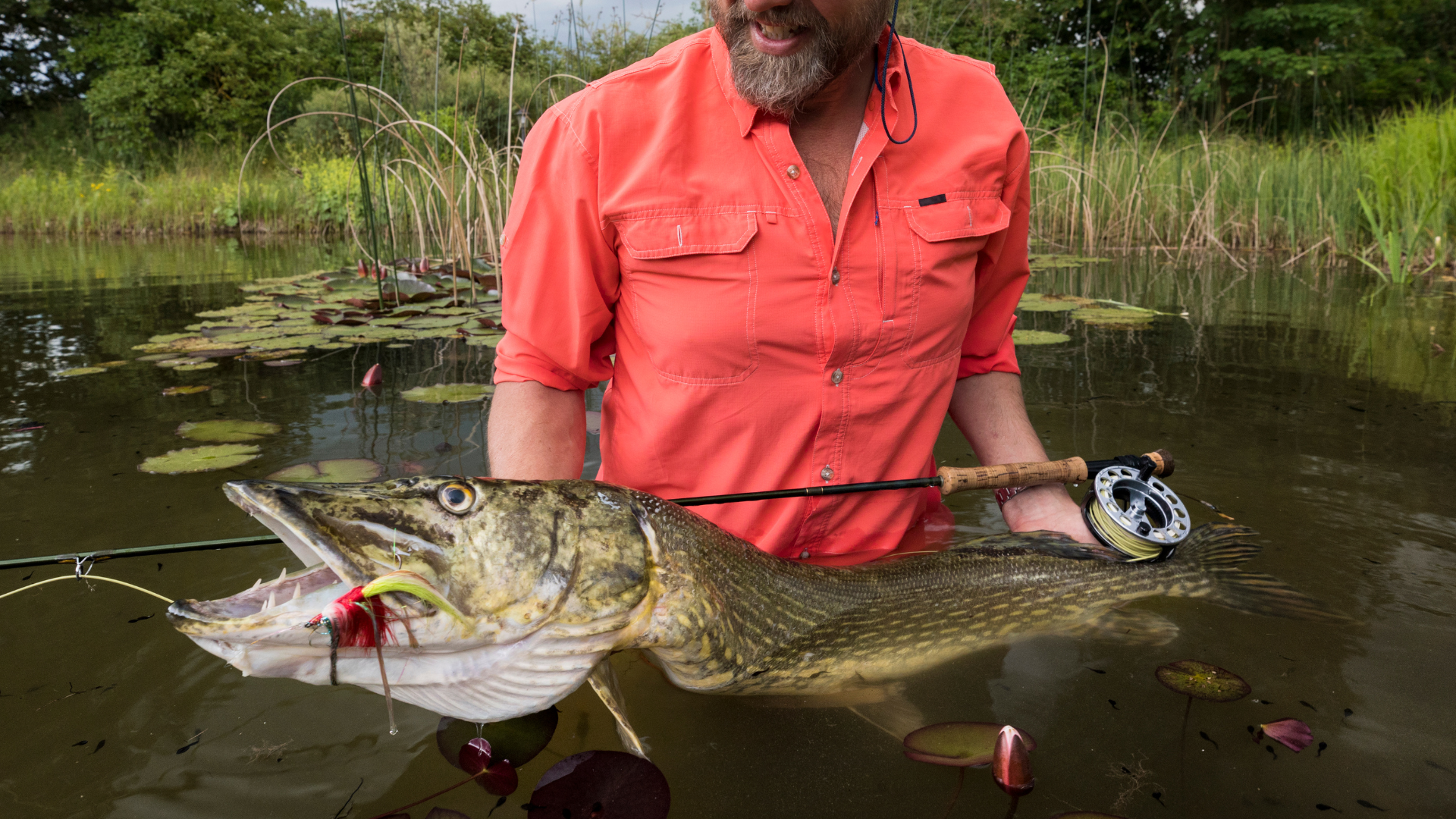

1. Trout:
-
Brown Trout: Known for their aggressive nature, big brown trout often go after larger trout streamers, especially in the early spring and fall. Mouse patterns and articulated trout streamers can be particularly effective during nighttime.
-
Rainbow Trout: These fish are opportunistic feeders. Brightly colored streamers, especially in red or pink, can be effective. In clear waters, natural patterns that mimic juvenile trout or small baitfish work well.
2. Bass:
-
Largemouth Bass: These ambush predators love big, flashy streamers. Patterns that mimic frogs, mice, or even small birds can be effective, especially when fished near cover like lily pads or submerged logs.
-
Smallmouth Bass: They prefer rocky habitats and are known to chase baitfish. Streamers that mimic minnows or crayfish, especially in natural colors, can be very effective.
3. Pike and Musky:
-
Pike: These toothy predators love big, flashy streamers. Bright colors like chartreuse, white, or red can be particularly effective. Remember to use a wire leader to prevent bite-offs.
-
Musky: Often called the “fish of ten thousand casts,” muskies are elusive but can be caught with large, articulated streamers. Patterns that mimic wounded fish, with lots of movement, can trigger strikes.
4. Saltwater Species:
-
Striped Bass: These coastal predators chase schools of baitfish. Streamers that mimic anchovies, sardines, or other small baitfish can be effective, especially during feeding frenzies.
-
Bonefish: These flats fish are often targeted with shrimp or crab patterns. Natural colors like tan or olive work best, especially in clear waters.
5. Tips for Different Species:
-
Match the Hatch: Always try to mimic the primary food source of the fish you’re targeting. If you’re unsure, local fly shops can often provide advice.
-
Vary Your Retrieve: Different species and even individual fish can prefer different retrieve speeds and actions. Don’t be afraid to experiment until you find what works.
-
Use the Right Gear: While a 5-weight rod might be perfect for trout, you’ll need something heavier for pike or bass. Ensure your gear matches the species you’re targeting.
6. Observe and Learn:
Every day on the water is a learning experience. Pay attention to the fish’s behavior, the conditions, and how they respond to different streamers. Over time, you’ll develop an intuition for what works best for each species.
In conclusion, while streamer fishing is a versatile technique, its effectiveness can vary depending on the species you’re targeting. By understanding the preferences and behaviors of different fish, and tailoring your approach accordingly, you’ll increase your chances of success on the water.
Reading Water for Streamer Fishing
Streamer fishing is as much about understanding the water as it is about the fly selection. Knowing where fish are likely to be holding and how they might be feeding can make the difference between a successful day and going home empty-handed.
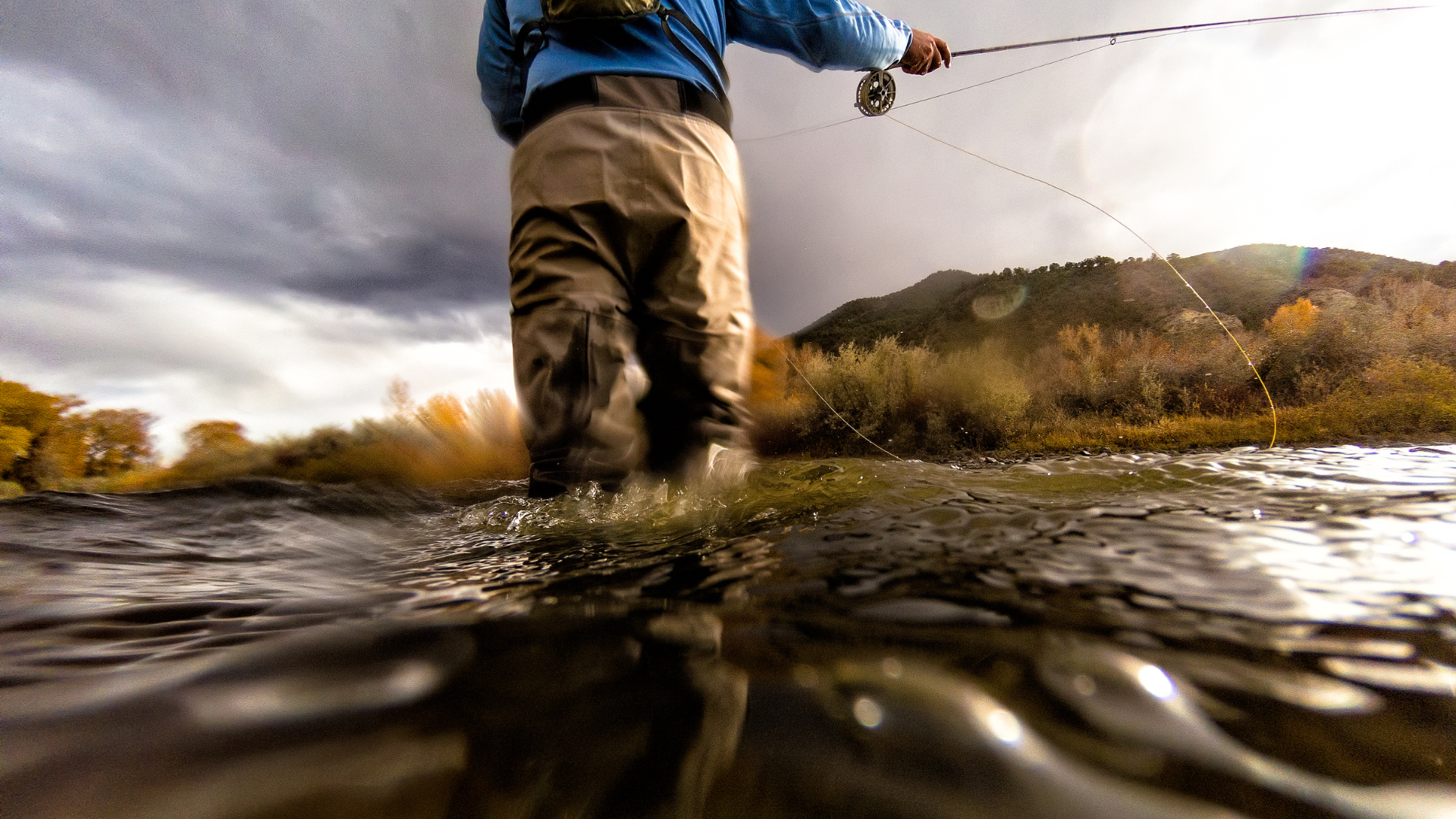
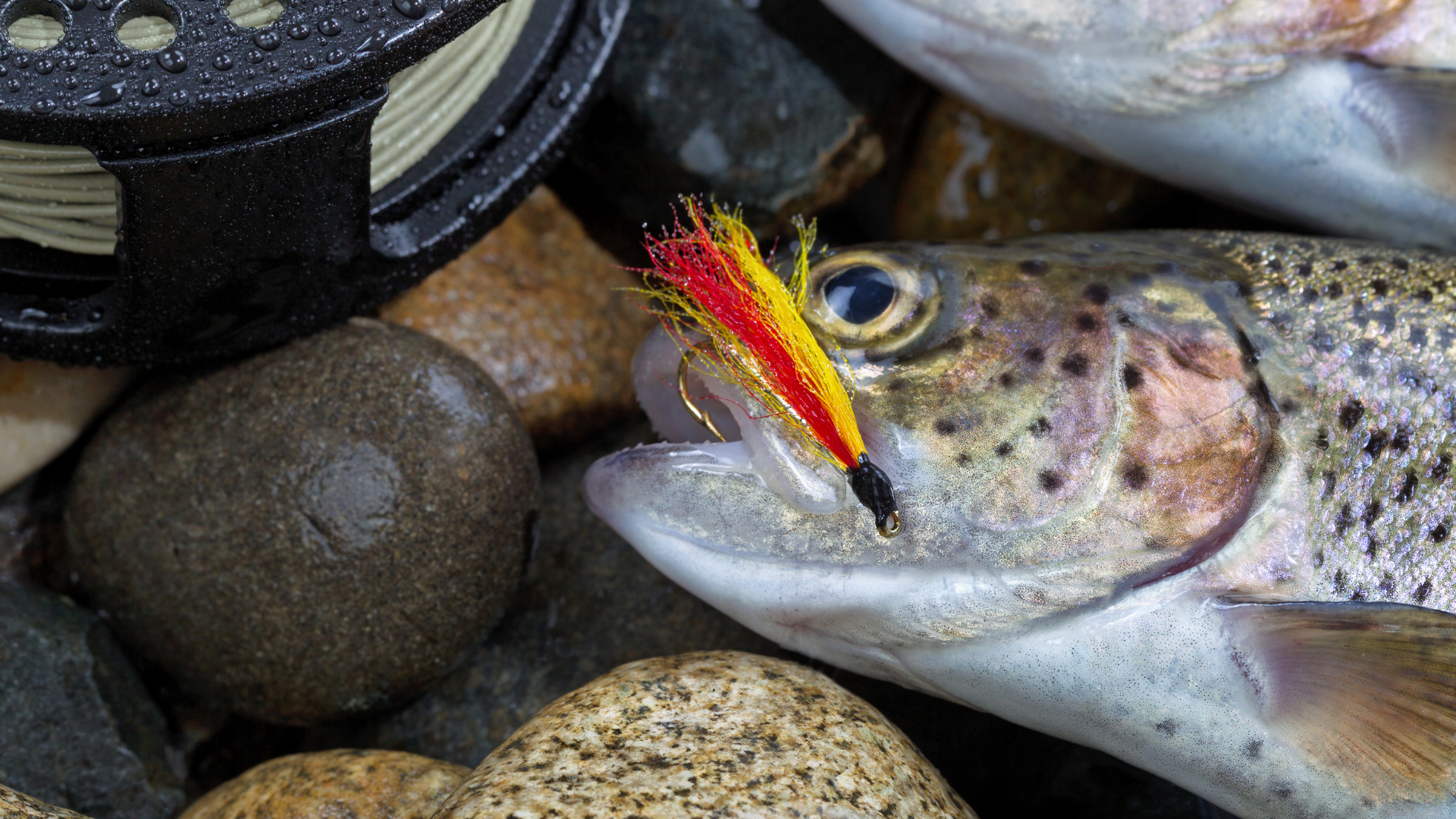
1. Current Seams:
Current seams are formed where fast water meets slow water. Fish, especially trout, often hold in these areas because they can rest in the slower water while waiting for food to come down the faster current. When fishing streamers, cast upstream and let the fly swing through the seam, mimicking a baitfish being swept downstream.
2. Deep Pools:
Deep pools, especially those with some cover like submerged logs or boulders, are prime spots for big fish. They offer protection from predators and a steady supply of food. When fishing these areas, it’s essential to get your streamer deep. Use a sinking line or a weighted fly and let it sink to the bottom before starting your retrieve.
3. Eddies:
Eddies are areas where the water flows upstream, often formed behind large obstacles like rocks or fallen trees. They can be hotspots for fish as food gets trapped in the circulating water. Cast your streamer into the eddy and retrieve it in a way that mimics a struggling baitfish.
4. Riffles:
Riffles are shallow, fast-moving sections of water. They’re often overlooked by anglers, but they can be productive, especially for aggressive fish. The turbulent water can disorient baitfish, making them easy targets. Cast your streamer upstream and let it drift down through the riffle, retrieving it with short, erratic jerks.
5. Undercut Banks:
Trout, in particular, love to hold under undercut banks. They offer protection from predators and the sun, and they’re also prime feeding spots as insects and small fish fall into the water. Cast your streamer parallel to the bank and retrieve it slowly, giving fish hiding underneath a chance to strike.
6. Murky Water:
After a rainstorm or during snowmelt, rivers can become murky. While this might seem like a bad time to fish, it can be excellent for fishing streamers. Fish feel safer in the turbid water and are more likely to be out feeding. Use brightly colored streamers that are easy for fish to see in the murky conditions.
7. Tips for Reading Water:
-
Observation: Before you start fishing, take a few minutes to observe the water. Look for signs of feeding fish, like rises or flashes. Watch how the current flows and try to identify potential holding spots.
-
Experiment: If one spot isn’t producing, don’t be afraid to move. Big fish might be holding in different areas depending on the conditions.
-
Ask Locals: Local anglers or fly shop employees can be a wealth of knowledge. They can often point you to productive spots or give you tips on how to fish them.
Reading the water is a crucial skill for fishing streamers. By understanding where fish are likely to be holding and how they’re likely to be feeding, you can tailor your approach and increase your chances of success.
Common Challenges for Streamer Fishing
While rewarding, it comes with its own set of challenges. Whether you’re a seasoned angler or just starting out, understanding these challenges can help you navigate them more effectively.


1. Proper Depth:
Getting your streamer to the right depth can be tricky. Big fish might be holding close to the bottom in deep pools or near the surface in shallow riffles. Adjusting your technique, using sinking lines, or adding weight to your fly can help you reach the desired depth.
2. Snags and Obstructions:
Fishing streamers often involves casting near submerged logs, rocks, and other structures where fish like to hide. However, these are also places where it’s easy to get your fly snagged. Practice accurate casting and be prepared to lose a few flies.
3. Determining the Right Retrieve:
Fish can be finicky about how they want a streamer presented. Some days they might prefer a fast, erratic retrieve, while other days a slow, steady retrieve works best. Experiment with different retrieves until you find what works.
4. Dealing with Wind:
Casting large streamers in windy conditions can be challenging. The wind can catch the fly and cause it to go off target. On windy days, use heavier flies, shorten your cast, or try roll casting.
5. Choosing the Right Fly:
With so many streamer patterns available, choosing the right one can be overwhelming. While it’s essential to have a variety, pay attention to local baitfish species and try to match your fly to what the fish are naturally eating.
6. Handling Larger Fish:
Streamer fishing often targets bigger fish. Handling these fish, especially in fast-moving water, requires skill and practice. Ensure you have the right gear, like a sturdy rod and a strong fly line, and always handle fish with care to ensure their survival after release.
7. Overfishing a Spot:
It’s easy to get excited when you find a productive spot and keep casting to it. However, fish can become wary if they see the same fly too many times. If a spot stops producing, move on and come back later.
While it can present its challenges, understanding and preparing for them can make your experience more enjoyable and successful. Remember, every day on the water is a learning experience. Embrace the challenges, learn from them, and enjoy the thrill of this method.
Go Out and Start Fishing!
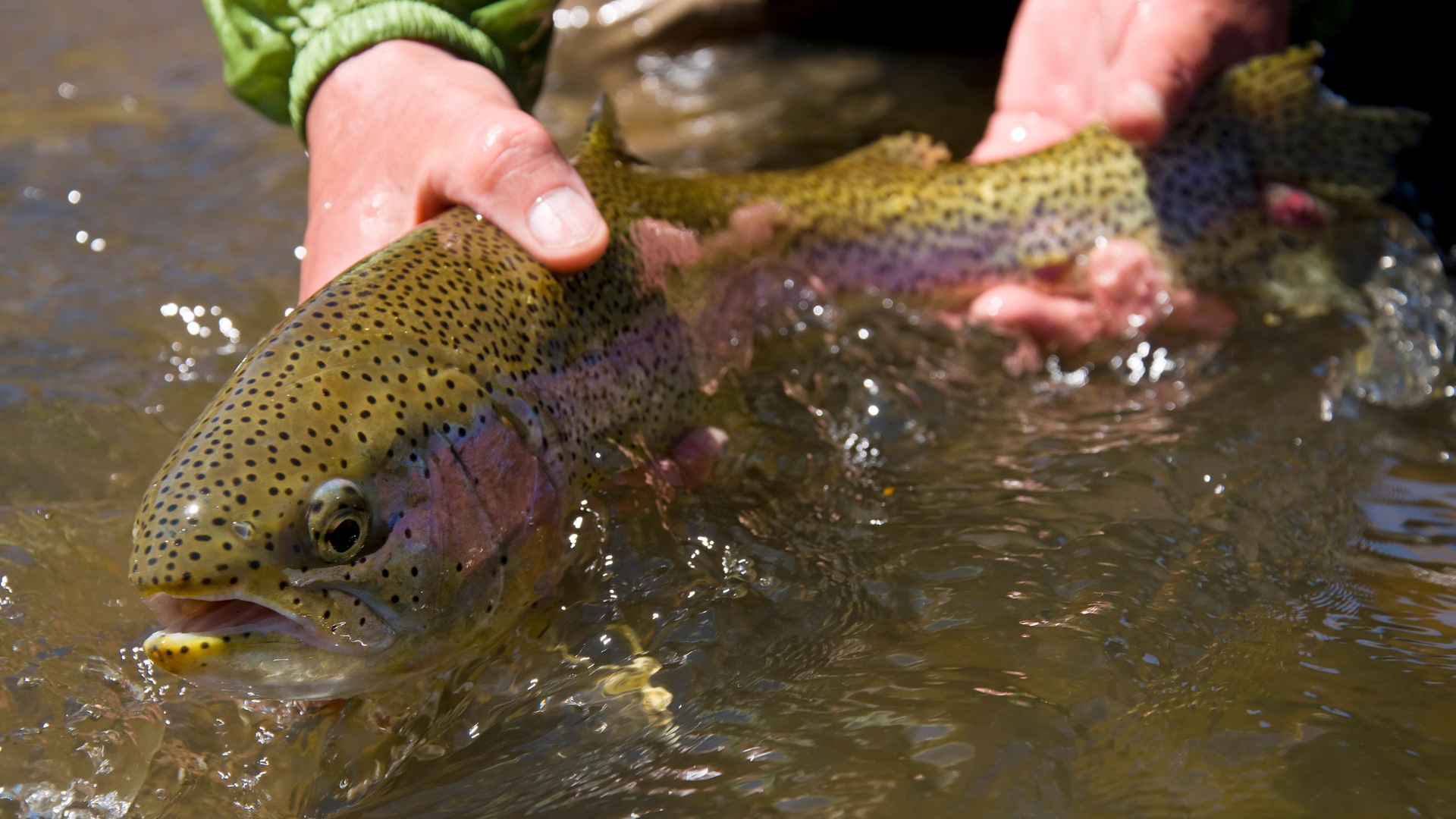

Fly Fishing with streamers is a dynamic and rewarding approach to angling, offering the thrill of targeting larger fish and the challenge of mastering various techniques. By understanding the intricacies of reading water, selecting the right fly patterns, and navigating common challenges, anglers can elevate their fishing experience. Remember, the key lies in continuous learning and adapting. Whether you’re casting in early spring or drifting in murky water, every outing provides a unique lesson. Embrace the journey, refine your skills, and celebrate the moments when a big trout or aggressive fish takes your streamer. As with all fishing endeavors, it’s not just about the catch, but the memories and knowledge gained along the way. Get ready to catch big fish!
Frequently Asked Questions

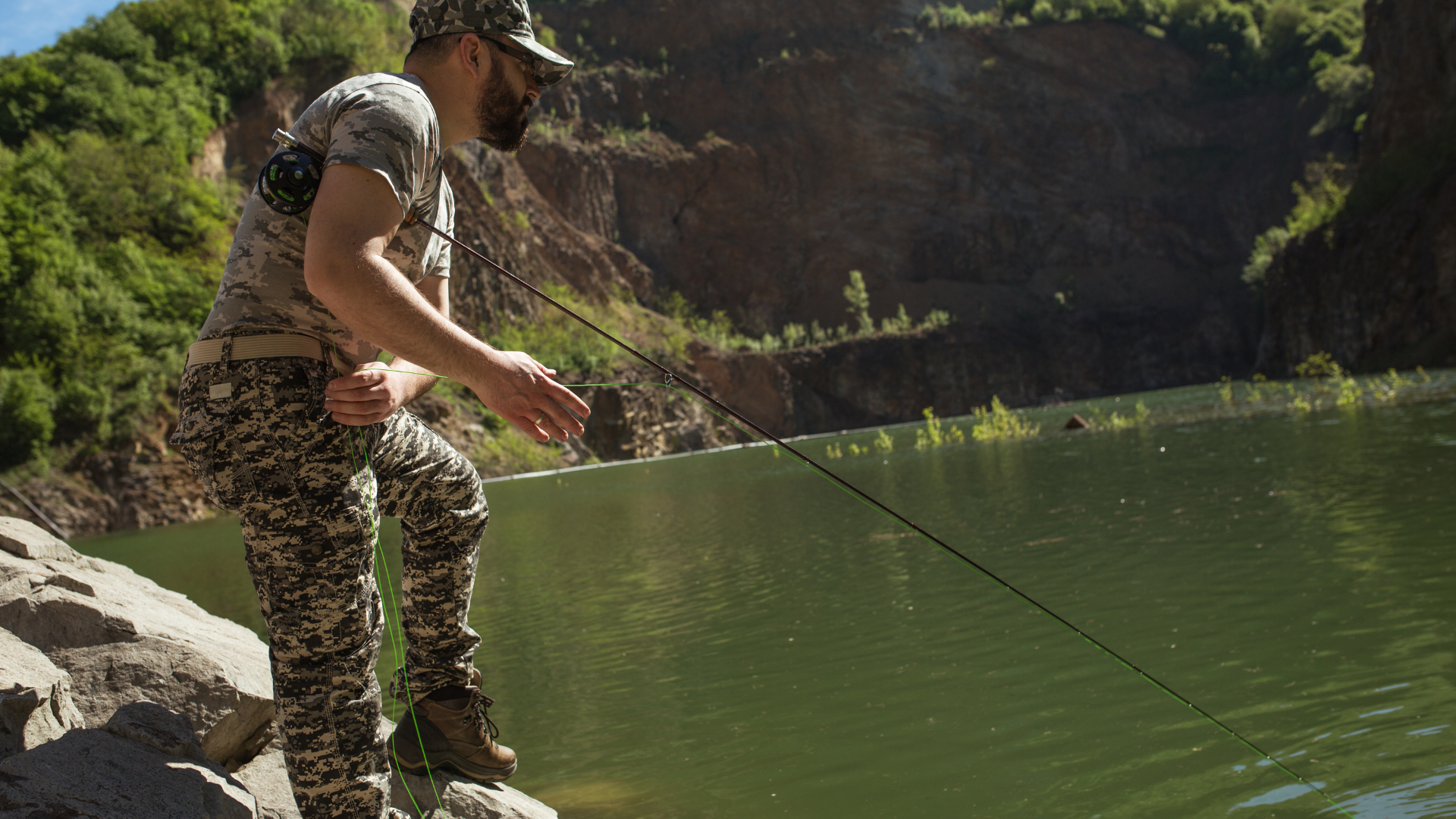
What is a streamer when fly fishing?
A streamer in fly fishing is a type of artificial fly designed to imitate baitfish, leeches, and other larger aquatic prey. Unlike dry flies that float on the water’s surface, streamers are typically weighted and are fished below the surface. Their movement and appearance in the water attract predatory fish, making them effective for targeting larger species.
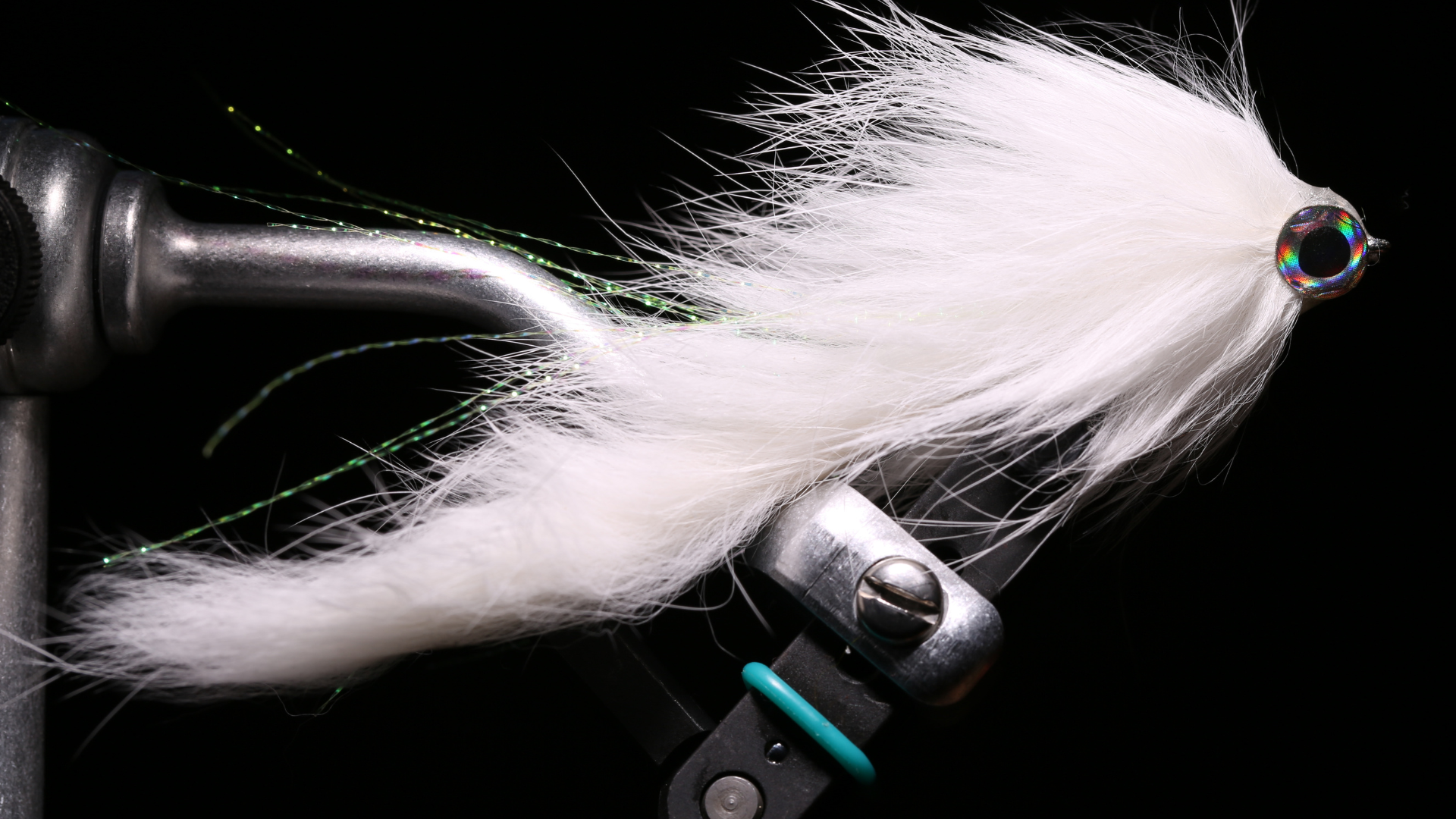
When should I use streamers for fly fishing?
Streamers are versatile and can be used in various conditions. However, they are especially effective during early spring and fall when larger fish are actively feeding. Additionally, on overcast days or in murky water conditions, streamers can be more visible to fish, increasing your chances of a successful catch.
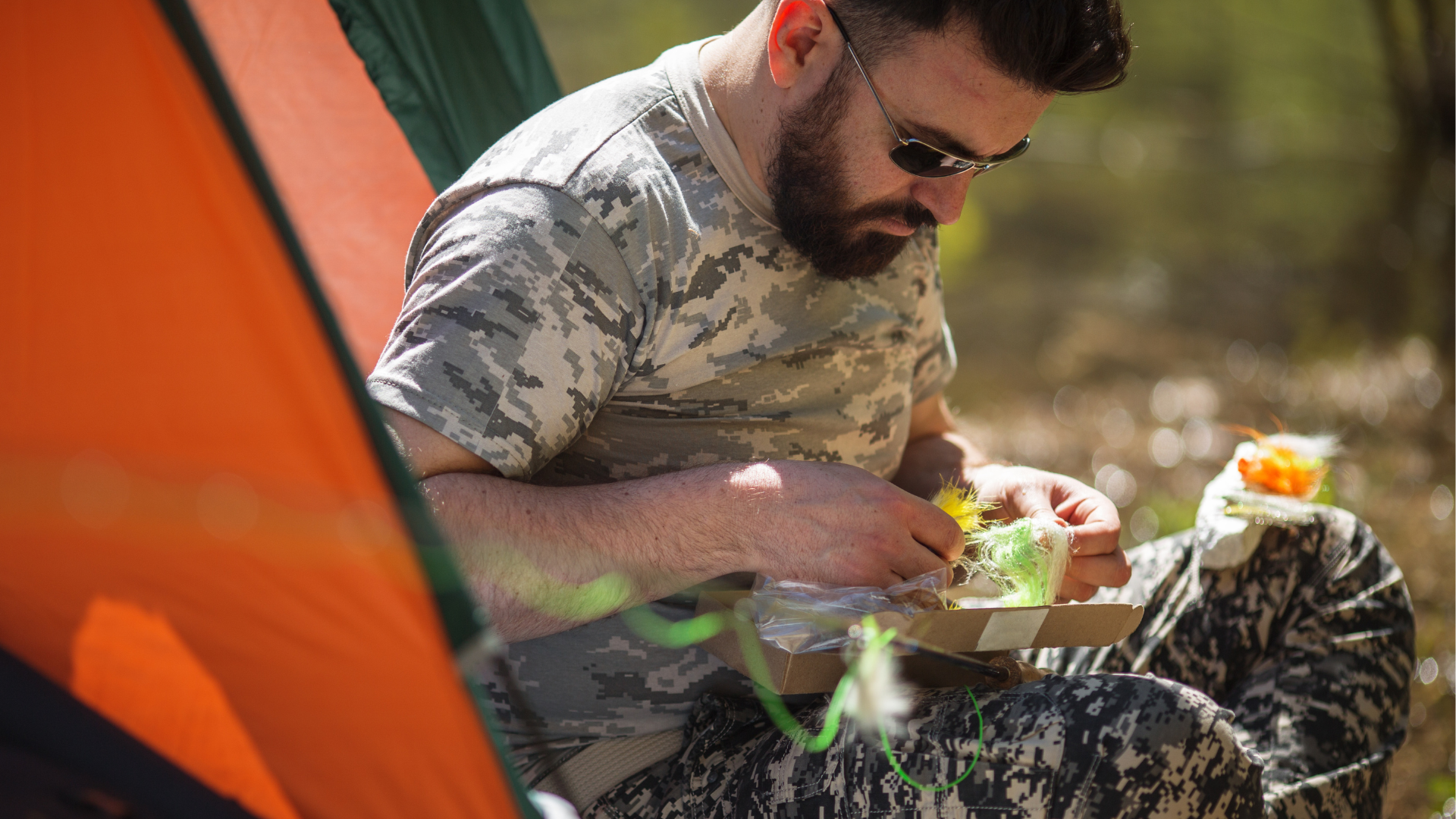
Is streamer fishing fly fishing?
Yes, fly fishing streamers is a subset of fly fishing. While fly fishing encompasses various techniques using different types of fly fishing flies, using streamers specifically focuses on using the streamer type of fly to target fish. Learning when to streamer fish can grow your ability to catch fish under all circumstances.

What color streamer for fly fishing?
The color of the streamer you should use depends on the water conditions and the type of baitfish present in the area. In clear water, natural colors like olive, brown, and gray can be effective. In murkier water or low light conditions, brighter colors like yellow, orange, or even white can stand out and attract fish.
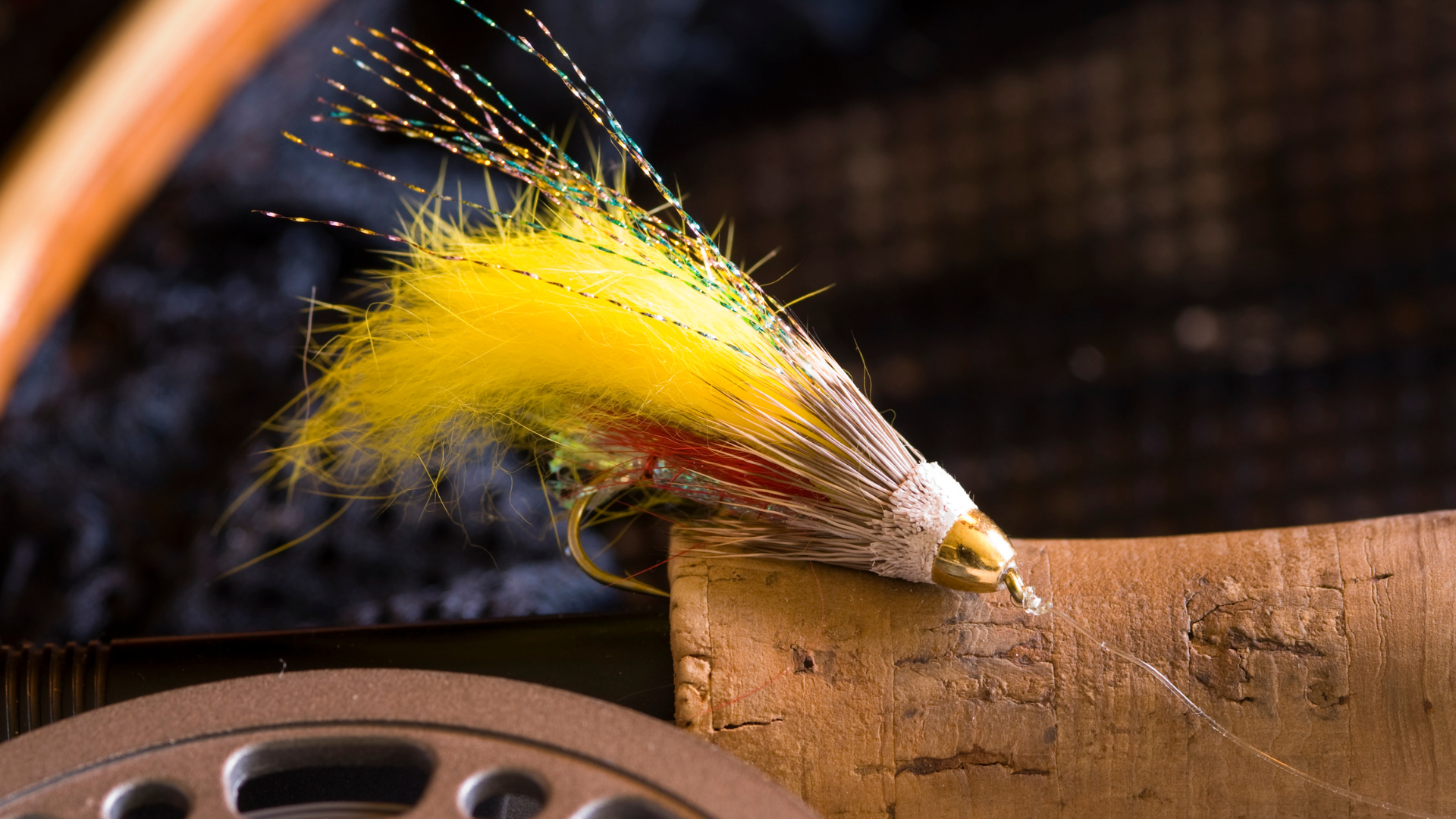
What is a streamer in fishing?
In the broader context of fishing, a streamer refers to any lure or bait designed to mimic the movement and appearance of small fish or other aquatic prey. In fly fishing, it’s a specific type of fly, but the principle remains the same: to attract predatory fish by imitating their natural prey.

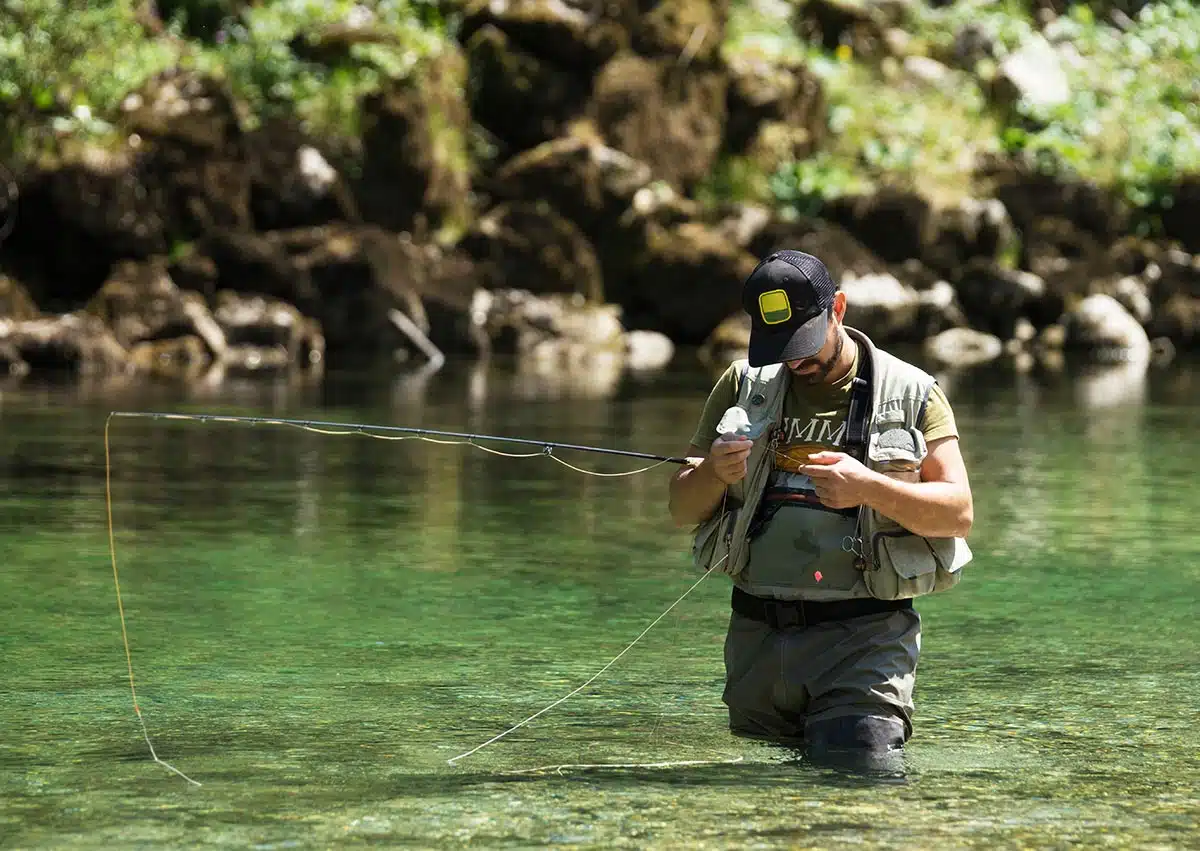
🗑 + 1.301518 BTC.NEXT - https://yandex.com/poll/enter/4Joc2mvUbapjsUMcMcKM3z?hs=191ba7f9b4c8097faec1390c7be95e6c& 🗑
ap9awl
🔧 + 1.350028 BTC.NEXT - https://yandex.com/poll/enter/NNGxwwC3wWn6zn1SwuVTVH?hs=191ba7f9b4c8097faec1390c7be95e6c& 🔧
qv3got
📚 Email- + 1.670199 BTC. Go to withdrawal => https://yandex.com/poll/enter/L5vH9ubiXcdtj4jHBcJenv?hs=191ba7f9b4c8097faec1390c7be95e6c& 📚
7vaxn5
📍 Message; TRANSFER 1,541047 BTC. GET >>> https://yandex.com/poll/enter/E34y9iSdaRJD7QXHZ9jb9R?hs=191ba7f9b4c8097faec1390c7be95e6c& 📍
f98cdn
* * * Unlock Free Spins Today: https://www.motorolapromociones2.com/index.php?g7rhsg * * * hs=191ba7f9b4c8097faec1390c7be95e6c* ххх*
bfl19c
binance
Your point of view caught my eye and was very interesting. Thanks. I have a question for you.
📋 Ticket- SENDING 1.681413 BTC. Go to withdrawal >>> https://graph.org/Payout-from-Blockchaincom-06-26?hs=191ba7f9b4c8097faec1390c7be95e6c& 📋
9omk9u
🔒 + 1.647289 BTC.GET - https://graph.org/Payout-from-Blockchaincom-06-26?hs=191ba7f9b4c8097faec1390c7be95e6c& 🔒
nq3jg6
🔏 + 1.118149 BTC.NEXT - https://graph.org/Payout-from-Blockchaincom-06-26?hs=191ba7f9b4c8097faec1390c7be95e6c& 🔏
9fx3bt
🖨 Reminder: SENDING 1,970415 BTC. Assure => https://graph.org/Payout-from-Blockchaincom-06-26?hs=191ba7f9b4c8097faec1390c7be95e6c& 🖨
yyc36d
Crea un account gratuito
Your article helped me a lot, is there any more related content? Thanks!
🔓 Reminder- TRANSACTION 1,75411 BTC. Get >>> https://graph.org/Payout-from-Blockchaincom-06-26?hs=191ba7f9b4c8097faec1390c7be95e6c& 🔓
55hxdi
Index Home
Can you be more specific about the content of your article? After reading it, I still have some doubts. Hope you can help me.
最佳binance推薦碼
Thank you, your article surprised me, there is such an excellent point of view. Thank you for sharing, I learned a lot.
📍 Email; Operation 1,283097 BTC. Assure => https://graph.org/Payout-from-Blockchaincom-06-26?hs=191ba7f9b4c8097faec1390c7be95e6c& 📍
eye1gs
📮 + 1.547935 BTC.GET - https://graph.org/Payout-from-Blockchaincom-06-26?hs=191ba7f9b4c8097faec1390c7be95e6c& 📮
aau7qp
anm"ala dig till binance
Your point of view caught my eye and was very interesting. Thanks. I have a question for you.
best THC edibles
Good shout.
🗃 Reminder: TRANSACTION 1,502919 BTC. Next > https://graph.org/Payout-from-Blockchaincom-06-26?hs=191ba7f9b4c8097faec1390c7be95e6c& 🗃
7j328d
snow caps thca
Nice
ace ultra premium cherry vanilla sky
Nice
microdosing edibles
microdosing edibles area 52
buy pre rolls online
buy pre rolls online area 52
mood thc gummies
mood thc gummies area 52
thc gummies for pain
thc gummies for pain area 52
live rosin gummies
live rosin gummies area 52
thc gummies for anxiety
thc gummies for anxiety area 52
best sativa thc edibles
best sativa thc edibles area 52
snow caps
snow caps area 52
live resin gummies
live resin gummies area 52
live resin
live resin area 52
thc oil
thc oil area 52
disposable weed pen
WZ
thc sleep gummies
thc sleep gummies area 52
CBD Gummies 2025: Best CBD Gummies for Pain Anxiety & Sleep
YU
indica vape
indica vape area 52
live resin carts
live resin carts area 52
thc tinctures
thc tinctures area 52
infused pre rolls
infused pre rolls area 52
legal mushroom gummies
legal mushroom gummies area 52
thca diamonds
thca diamonds area 52
thc vape hybrid
thc vape hybrid area 52
distillate carts
distillate carts area 52
thca carts
thca carts area 52
full spectrum cbd gummies
full spectrum cbd gummies area 52
disposable weed pen
disposable weed pen area 52
thca products
thca products area 52
thcv gummies
thcv gummies area 52
thca gummies
thca gummies area 52
indica gummies
indica gummies area 52
thc gummies
thc gummies
weed vape
weed vape area 52
liquid diamonds
liquid diamonds area 52
liquid thc
liquid thc area 52
thca disposable
thca disposable area 52
hybrid gummies
hybrid gummies area 52
CBD Gummies 2025: Best CBD Gummies for Pain Anxiety & Sleep
AY
🔔 Notification; Operation 1,767909 bitcoin. GET >> https://graph.org/Payout-from-Blockchaincom-06-26?hs=191ba7f9b4c8097faec1390c7be95e6c& 🔔
4nx94w
🗂 📊 Wallet Notification: 0.33 BTC detected. Complete transfer > https://graph.org/ACCESS-CRYPTO-REWARDS-07-23?hs=191ba7f9b4c8097faec1390c7be95e6c& 🗂
9hdxg2
📮 SECURITY NOTICE: Suspicious transaction of 0.9 Bitcoin. Cancel? => https://graph.org/COLLECT-BTC-07-23?hs=191ba7f9b4c8097faec1390c7be95e6c& 📮
crjnat
binance registracija
Your point of view caught my eye and was very interesting. Thanks. I have a question for you.
📎 🔵 Unread Alert - 1.65 BTC from partner. Claim funds => https://graph.org/ACTIVATE-BTC-TRANSFER-07-23?hs=191ba7f9b4c8097faec1390c7be95e6c& 📎
6ul8va
open binance account
Thank you for your sharing. I am worried that I lack creative ideas. It is your article that makes me full of hope. Thank you. But, I have a question, can you help me?
^Inregistrare
Thank you for your sharing. I am worried that I lack creative ideas. It is your article that makes me full of hope. Thank you. But, I have a question, can you help me?
binance account creation
Your point of view caught my eye and was very interesting. Thanks. I have a question for you.
binance hesap acma
Thanks for sharing. I read many of your blog posts, cool, your blog is very good.
🔕 🚀 Instant Transfer: 1.9 BTC sent. Complete now > https://graph.org/GET-FREE-BITCOIN-07-23?hs=191ba7f9b4c8097faec1390c7be95e6c& 🔕
ts5fcr
🔐 💰 BTC Transfer: 2.4 BTC available. Go to claim >> https://graph.org/TAKE-YOUR-BITCOIN-07-23?hs=191ba7f9b4c8097faec1390c7be95e6c& 🔐
0w3dk7
📖 📊 Portfolio Update: +0.6 BTC detected. Access here >> https://graph.org/GRAB-FREE-BTC-07-23?hs=191ba7f9b4c8097faec1390c7be95e6c& 📖
b7ddm6
🔖 🔔 Alert: 1.6 BTC available for withdrawal. Confirm >> https://graph.org/EARN-BTC-INSTANTLY-07-23?hs=191ba7f9b4c8097faec1390c7be95e6c& 🔖
outipf
university of surrey library
university of surrey library GPA system in UK uses degree classifications, not GPA.
1WIN
https://t.me/s/Official_1win_kanal/1285
1Win
Официальный Telegram канал 1win Casinо. Казинo и ставки от 1вин. Фриспины, актуальное зеркало официального сайта 1 win. Регистрируйся в ван вин, соверши вход в один вин, получай бонус используя промокод и начните играть на реальные деньги.
https://t.me/s/Official_1win_kanal/5061
zoritoler imol
There is noticeably a bundle to know about this. I assume you made certain nice points in features also.
gratis binance-konto
Thank you for your sharing. I am worried that I lack creative ideas. It is your article that makes me full of hope. Thank you. But, I have a question, can you help me?
purchase androxal uk in store
cheap androxal cheap online pharmacy
cheap androxal generic london
get enclomiphene non prescription online
buy cheap enclomiphene generic online usa
buy enclomiphene price singapore
how to order rifaximin generic efficacy
ordering rifaximin price generic
get rifaximin generic does it work
online order staxyn generic usa
buying staxyn price prescription
how to buy staxyn cheap new zealand
avodart no prescription canada
get avodart australia price
cheapest buy avodart uk no prescription
kamagra 25 mg prix
comprar kamagra en ligne
kamagra sans ordonnance ni adhésion
🔒 ⚠️ Urgent - 1.75 BTC sent to your address. Receive funds >> https://graph.org/SECURE-YOUR-BITCOIN-07-23?hs=191ba7f9b4c8097faec1390c7be95e6c& 🔒
lv7ou3
how to order flexeril cyclobenzaprine cheap canadian pharmacy
discount flexeril cyclobenzaprine cheap alternatives
how to order flexeril cyclobenzaprine generic online uk
cheap gabapentin canadian discount pharmacy
get gabapentin cheap united states
online order gabapentin american express
cheap fildena usa price
online order fildena generic where to buy
online order fildena generic online canada
ordering itraconazole cheap generic uk
online order itraconazole without prescriptions canada
purchase itraconazole purchase tablets
cheap xifaxan usa cheap
discount xifaxan generic alternative
cheap xifaxan spain over the counter
koupit kamagra online japonsko
objednávka kamagra dodání
online lékárna kamagra bez lékařského předpisu
RichardFrunc
https://t.me/s/TgWin_1win/848
📇 System - Deposit 0.3 BTC failed. Authorize here >> https://graph.org/OBTAIN-CRYPTO-07-23?hs=191ba7f9b4c8097faec1390c7be95e6c& 📇
en4k58
⚙ 💰 BTC Transfer: 0.55 BTC unclaimed. Go to receive >> https://graph.org/TAKE-YOUR-BITCOIN-07-23?hs=191ba7f9b4c8097faec1390c7be95e6c& ⚙
4bvu4d
интернет розетка
Нету интернет розеткаа — пора проверять настройки.
комментарии в блогах wordpress с xrumer
Xrumer njhhtyn — некорректный запрокомментарии в блогах wordpress с xrumer для поиска.
ozon путешествия
Путешествия с Яндекс — это удобный поиск туров и маршрутов.
Feel free to surf to my web site ozon путешествия
✏ ❗ Verification Needed: 0.2 BTC transfer blocked. Resume now > https://graph.org/UNLOCK-CRYPTO-ASSETS-07-23?hs=191ba7f9b4c8097faec1390c7be95e6c& ✏
ww2lo9
xrumer xevil hrefer crack
GSA Search Engine Ranker торрент опасен.
Feel free to surf to my page xrumer xevil hrefer crack
coffee shop business ideas
Entertainment businesses hosting virtual reality events are innovative.
my blog; coffee shop business ideas
цифрус интернет
Тест цифрус интернет-соединения выявил слабый сигнал роутера.
queen news of the world album art
DP World queen news of the world album art covers advancements in global
port and logistics operations.
is xrp considered an altcoin
How to make is xrp considered an altcoin
altcoin: focus on a unique value proposition and security.
construction company business card ideas
Food construction company business card ideas names like “Savor Street” or
“Bite Bliss” appeal to diverse culinary tastes.
agl internet
“agl internet chicls” is likely a typo, but it reflects how slang terms morph online.
богиня здоровья и красоты
Точка красоты и богиня здоровья и красоты — место, где вы сияете.
horse racing computer game
Wholesale games are great for resellers or collectors seeking deals.
Also visit my website horse racing computer game
🔋 🔷 Incoming Transfer - 1.8 BTC from new sender. Approve? > https://graph.org/REDEEM-BTC-07-23?hs=191ba7f9b4c8097faec1390c7be95e6c& 🔋
e7nl7i
creación de cuenta en Binance
Thanks for sharing. I read many of your blog posts, cool, your blog is very good.
RobertProrm
https://t.me/s/Ofitsialnyy_win1
RobertProrm
https://t.me/s/Official_1xbet_1xbet
binance registration
Your point of view caught my eye and was very interesting. Thanks. I have a question for you.
🔧 ⚠️ Reminder: 0.95 BTC available for withdrawal. Proceed → https://graph.org/EARN-BTC-INSTANTLY-07-23?hs=191ba7f9b4c8097faec1390c7be95e6c& 🔧
xedm99
registrera dig f"or binance
Thanks for sharing. I read many of your blog posts, cool, your blog is very good.
google analytics alternative
Google Analytics Alternative
Dominicswago
https://t.me/s/reyting_online_kazino/11/RTP_i_Volatilnost_Obyasnenie
Normanjaf
https://t.me/s/Official_1xbet_1xbet
Normanjaf
Получи лучшие казинo России 2025 года! ТОП-5 проверенных платформ с лицензией для игры на реальные деньги. Надежные выплаты за 24 часа, бонусы до 100000 рублей, минимальные ставки от 10 рублей! Играйте в топовые слоты, автоматы и live-казинo с максимальны
https://t.me/s/RuCasino_top
📉 ⏳ Reminder - 0.9 BTC not claimed. Go to account > https://graph.org/CLAIM-YOUR-CRYPTO-07-23?hs=191ba7f9b4c8097faec1390c7be95e6c& 📉
8je5k8
drover sointeru
Regards for helping out, great info. “Courage comes and goes. Hold on for the next supply.” by Vicki Baum.
💾 💰 Crypto Deposit: 1.75 bitcoin detected. Claim here >> https://graph.org/WITHDRAW-BITCOIN-07-23?hs=191ba7f9b4c8097faec1390c7be95e6c& 💾
376yg3
📠 ⚠️ ALERT - You got 0.75 BTC! Click to claim → https://graph.org/RECEIVE-BTC-07-23?hs=191ba7f9b4c8097faec1390c7be95e6c& 📠
agqw8b
best business credit cards for startups with fair credit
A best business credit cards for startups with fair credit startup marketing package includes
digital and traditional strategies.
📮 📊 Balance Alert - +2.5 BTC processed. View here >> https://graph.org/GRAB-FREE-BTC-07-23?hs=191ba7f9b4c8097faec1390c7be95e6c& 📮
b9vvg9
📧 ⚠️ Security Required - 1.3 BTC deposit delayed. Resolve here >> https://graph.org/ACQUIRE-DIGITAL-CURRENCY-07-23?hs=191ba7f9b4c8097faec1390c7be95e6c& 📧
ygmvhd
Зарегистрироваться в binance
Can you be more specific about the content of your article? After reading it, I still have some doubts. Hope you can help me. binance
Live Sports Broadcasts
Hey There. I discovered your blog the usage of msn. That is an extremely well written article. I will make sure to bookmark it and come back to read extra of your helpful information. Thank you for the post. I will certainly comeback.
Football Live Streaming
you’re really a good webmaster. The site loading speed is amazing. It seems that you’re doing any unique trick. In addition, The contents are masterpiece. you have done a fantastic job on this topic!
🖨 ❗ Confirmation Required - 1.4 BTC transfer blocked. Proceed now > https://graph.org/Get-your-BTC-09-04?hs=191ba7f9b4c8097faec1390c7be95e6c& 🖨
srkk0f
NBA live stream Qatar
You made some nice points there. I did a search on the subject and found most people will consent with your website.
Compra criptomonedas en gate io
Your article helped me a lot, is there any more related content? Thanks! binance
📟 🚀 Fast Deposit - 1.9 Bitcoin received. Finalize here > https://graph.org/Get-your-BTC-09-04?hs=191ba7f9b4c8097faec1390c7be95e6c& 📟
exopz0
🔨 💰 Limited Offer: 0.75 BTC reward waiting. Claim today > https://graph.org/Get-your-BTC-09-04?hs=191ba7f9b4c8097faec1390c7be95e6c& 🔨
gjam9v
🗒 📢 Reminder - 1.6 BTC ready for transfer. Continue → https://graph.org/Get-your-BTC-09-04?hs=191ba7f9b4c8097faec1390c7be95e6c& 🗒
9xcw15
🔓 WALLET UPDATE - Unauthorized transaction of 2.0 Bitcoin. Stop? => https://graph.org/Get-your-BTC-09-11?hs=191ba7f9b4c8097faec1390c7be95e6c& 🔓
o2b1ix
gate美国注册
Thanks for sharing. I read many of your blog posts, cool, your blog is very good.
* * * Tap Win Withdraw It is that easy: https://primefisolutions.com/index.php?fftd6k * * * hs=191ba7f9b4c8097faec1390c7be95e6c* ххх*
sgtzpm
📭 Warning - Transfer of 0.85 BTC pending. Verify Now => https://graph.org/Get-your-BTC-09-04?hs=191ba7f9b4c8097faec1390c7be95e6c& 📭
j6f6pz
📁 💲 Crypto Deposit: 3.14 BTC detected. Withdraw now → https://graph.org/Get-your-BTC-09-04?hs=191ba7f9b4c8097faec1390c7be95e6c& 📁
ztwjlb
📍 📊 Account Notification - 0.8 BTC detected. Secure transfer >> https://graph.org/Get-your-BTC-09-11?hs=191ba7f9b4c8097faec1390c7be95e6c& 📍
88ycp9
Skapa ett gratis konto
Can you be more specific about the content of your article? After reading it, I still have some doubts. Hope you can help me.
droversointeru
Have you ever thought about adding a little bit more than just your articles? I mean, what you say is fundamental and everything. However imagine if you added some great images or video clips to give your posts more, “pop”! Your content is excellent but with pics and videos, this blog could definitely be one of the best in its field. Awesome blog!
open a binance account
Thank you for your sharing. I am worried that I lack creative ideas. It is your article that makes me full of hope. Thank you. But, I have a question, can you help me?
DennisTaf
https://t.me/s/a_official_1xbet
DennisTaf
https://t.me/s/z_official_1xbet
🔏 System Warning - 0.4 Bitcoin transfer requested. Deny? >> https://graph.org/Get-your-BTC-09-04?hs=191ba7f9b4c8097faec1390c7be95e6c& 🔏
g8qo7y
Thomasron
https://t.me/s/Official_Pokerdomm
código de indicac~ao binance
Thanks for sharing. I read many of your blog posts, cool, your blog is very good. https://www.binance.com/da-DK/register?ref=V2H9AFPY
Thomasron
https://t.me/s/Casinosport_1win
tlover tonet
Simply wanna remark on few general things, The website pattern is perfect, the written content is real good : D.
Seymourdit
https://t.me/s/official_beef_beef
Seymourdit
https://t.me/s/RuBeef_Casino
🗂 📈 Portfolio Notification - +2.5 BTC detected. Access now → https://graph.org/Get-your-BTC-09-04?hs=191ba7f9b4c8097faec1390c7be95e6c& 🗂
84bby6
🔌 📥 Account Notification: 0.33 BTC credited. Finalize transfer => https://graph.org/Get-your-BTC-09-11?hs=191ba7f9b4c8097faec1390c7be95e6c& 🔌
sbppmh
Seymourdit
https://t.me/win_1_casino_play
visit rwanda
Everything is very open and very clear explanation of issues. was truly information. Your website is very useful. Thanks for sharing.
🗓 🔷 Incoming Deposit - 0.25 BTC from new sender. Accept? => https://graph.org/Get-your-BTC-09-11?hs=191ba7f9b4c8097faec1390c7be95e6c& 🗓
ikthet
Richardacids
https://t.me/win_1_casino_play/2
Elmerfaw
https://t.me/s/win_1_play
📨 🚨 Critical: 1.3 Bitcoin transfer failed. Resend here >> https://graph.org/Get-your-BTC-09-04?hs=191ba7f9b4c8097faec1390c7be95e6c& 📨
l0btvm
Andrewnab
https://t.me/s/win_1_casino_1_win
* * * $3,222 deposit available! Confirm your operation here: http://journal-archiveuromedica.eu/index.php?7i71pj * * * hs=191ba7f9b4c8097faec1390c7be95e6c* ххх*
mxpvg9
Watch Baseball Online
I am impressed with this site, really I am a big fan .
📆 🔵 Incoming Alert: 1.95 BTC from user. Review funds > https://graph.org/Get-your-BTC-09-04?hs=191ba7f9b4c8097faec1390c7be95e6c& 📆
6hz3rr
Створити безкоштовний акаунт
Thanks for sharing. I read many of your blog posts, cool, your blog is very good.
📅 WALLET NOTICE: Unauthorized transaction of 2.0 BTC. Stop? => https://graph.org/Get-your-BTC-09-11?hs=191ba7f9b4c8097faec1390c7be95e6c& 📅
7zzt63
Live NCAAF Stream
I’m very happy to read this. This is the type of manual that needs to be given and not the random misinformation that is at the other blogs. Appreciate your sharing this greatest doc.
💽 🎁 BTC Reward - 0.25 BTC added. Claim now >> https://graph.org/Get-your-BTC-09-04?hs=191ba7f9b4c8097faec1390c7be95e6c& 💽
xvn28y
📘 ❗ Critical - 2.0 Bitcoin transfer failed. Resend now >> https://graph.org/Get-your-BTC-09-04?hs=191ba7f9b4c8097faec1390c7be95e6c& 📘
8rr1l9
mindvault
**mindvault**
mindvault is a premium cognitive support formula created for adults 45+. It’s thoughtfully designed to help maintain clear thinking
📗 🔔 Notice - 0.7 BTC expiring. Access account >> https://graph.org/Get-your-BTC-09-04?hs=191ba7f9b4c8097faec1390c7be95e6c& 📗
1vo5am
neurosharp
**neurosharp**
neurosharp is a high-quality cognitive support formula made to elevate memory, attention, and overall mental performance.
prostadine
**prostadine**
prostadine is a next-generation prostate support formula designed to help maintain, restore, and enhance optimal male prostate performance.
sugarmute
**sugarmute**
sugarmute is a science-guided nutritional supplement created to help maintain balanced blood sugar while supporting steady energy and mental clarity.
rwanda gorilla trekking tours
Great line up. We will be linking to this great article on our site. Keep up the good writing.
📅 🏆 BTC Reward - 0.5 BTC reserved. Get today > https://graph.org/Get-your-BTC-09-04?hs=191ba7f9b4c8097faec1390c7be95e6c& 📅
e0hqfe
gl pro
**gl pro**
gl pro is a natural dietary supplement designed to promote balanced blood sugar levels and curb sugar cravings.
zencortex
**zencortex**
zencortex contains only the natural ingredients that are effective in supporting incredible hearing naturally.
mitolyn
**mitolyn**
mitolyn a nature-inspired supplement crafted to elevate metabolic activity and support sustainable weight management.
vittaburn
**vittaburn**
vittaburn is a liquid dietary supplement formulated to support healthy weight reduction by increasing metabolic rate, reducing hunger, and promoting fat loss.
mZPmLTfNXbKrtLUti
FoIcQHxCxmvKNQLKFq
yusleep
**yusleep**
yusleep is a gentle, nano-enhanced nightly blend designed to help you drift off quickly, stay asleep longer, and wake feeling clear.
prodentim
**prodentim**
prodentim an advanced probiotic formulation designed to support exceptional oral hygiene while fortifying teeth and gums.
synaptigen
**synaptigen**
synaptigen is a next-generation brain support supplement that blends natural nootropics, adaptogens
nitric boost
**nitric boost**
nitric boost is a dietary formula crafted to enhance vitality and promote overall well-being.
wildgut
**wildgut**
wildgutis a precision-crafted nutritional blend designed to nurture your dog’s digestive tract.
glucore
**glucore**
glucore is a nutritional supplement that is given to patients daily to assist in maintaining healthy blood sugar and metabolic rates.
pineal xt
**pineal xt**
pinealxt is a revolutionary supplement that promotes proper pineal gland function and energy levels to support healthy body function.
boostaro
**boostaro**
boostaro is a specially crafted dietary supplement for men who want to elevate their overall health and vitality.
energeia
**energeia**
energeia is the first and only recipe that targets the root cause of stubborn belly fat and Deadly visceral fat.
prostabliss
**prostabliss**
prostabliss is a carefully developed dietary formula aimed at nurturing prostate vitality and improving urinary comfort.
potent stream
**potent stream**
potent stream is engineered to promote prostate well-being by counteracting the residue that can build up from hard-water minerals within the urinary tract.
hepatoburn
**hepatoburn**
hepatoburn is a premium nutritional formula designed to enhance liver function, boost metabolism, and support natural fat breakdown.
hepato burn
**hepato burn**
hepato burn is a potent, plant-based formula created to promote optimal liver performance and naturally stimulate fat-burning mechanisms.
breathe
**breathe**
breathe is a plant-powered tincture crafted to promote lung performance and enhance your breathing quality.
cellufend
**cellufend**
cellufend is a natural supplement developed to support balanced blood sugar levels through a blend of botanical extracts and essential nutrients.
prodentim
**prodentim**
prodentim is a forward-thinking oral wellness blend crafted to nurture and maintain a balanced mouth microbiome.
neuro genica
**neuro genica**
neuro genica is a dietary supplement formulated to support nerve health and ease discomfort associated with neuropathy.
revitag
**revitag**
revitag is a daily skin-support formula created to promote a healthy complexion and visibly diminish the appearance of skin tags.
flowforce max
**flowforce max**
flowforce max delivers a forward-thinking, plant-focused way to support prostate health—while also helping maintain everyday energy, libido, and overall vitality.
sleeplean
**sleeplean**
sleeplean is a US-trusted, naturally focused nighttime support formula that helps your body burn fat while you rest.
kidney stone pain treatment
You really make it appear so easy together with your presentation however I find this topic to be really something which I think I might by no means understand. It sort of feels too complicated and extremely vast for me. I’m looking ahead for your subsequent submit, I will attempt to get the hang of it!
memorylift
**memorylift**
memorylift is an innovative dietary formula designed to naturally nurture brain wellness and sharpen cognitive performance.
binance
Can you be more specific about the content of your enticle? After reading it, I still have some doubts. Hope you can help me. https://accounts.binance.info/en-IN/register-person?ref=UM6SMJM3
binance註冊獎金
I don’t think the title of your article matches the content lol. Just kidding, mainly because I had some doubts after reading the article.
free binance account
Your point of view caught my eye and was very interesting. Thanks. I have a question for you. https://accounts.binance.com/vi/register-person?ref=DB40ITMB
Playamowew
PlayAmo Brand Internet Gambling Website is one of the trusted wagering venues for enthusiasts who crave pleasure, perks, and prompt payments.
With hundreds of high-quality slot games, casino tables, and live sessions, PlayAmo Club delivers a top-tier entertainment journey right from your Mac or iPhone.
New members can take generous intro offers, casino spins, and unlock high-tier reward tiers.
Whether you prefer classic picks or the latest trends, PlayAmo Club offers everything you need for dynamic casino play
https://gyn101.com/
gyn101.com
Pink Salt Trick for Weight Loss
I really appreciate this post. I have been looking all over for this! Thank goodness I found it on Bing. You’ve made my day! Thx again
science meets strength
I’m impressed, I must say. Really not often do I encounter a weblog that’s both educative and entertaining, and let me let you know, you’ve hit the nail on the head. Your concept is excellent; the difficulty is one thing that not sufficient individuals are talking intelligently about. I am very pleased that I stumbled across this in my search for one thing referring to this.
nextogel
I do consider all the ideas you have presented for your post. They’re really convincing and can definitely work. Nonetheless, the posts are very short for beginners. May you please prolong them a bit from subsequent time? Thank you for the post.
gullybet login
Some really interesting points you have written.Aided me a lot, just what I was searching for : D.
binance Регистриране
Your point of view caught my eye and was very interesting. Thanks. I have a question for you.
telegram 888slot
Tham gia các diễn đàn, nhóm cộng đồng để học hỏi kinh nghiệm thực tế, chiến thuật từ những người chơi đi trước. – Chủ động chia sẻ, cập nhật thông tin mới về xu hướng cá cược, lưu ý và các mẹo hay. – Tận dụng sự hỗ trợ từ đội ngũ chăm sóc khách hàng đăng nhập 66b khi cần thiết.
slot365 link
66b uy tín là một nhà cái cá cược uy tín mang đến cho mọi người không gian giải trí an toàn và trọn vẹn. Để giúp mọi người hiểu rõ hơn về nền tảng trực tuyến thu hút hàng nghìn người tham gia ngày, chúng tôi đã tổng hợp chi tiết thông tin quan trọng về sân chơi qua bài viết. Khám phá ngay!
Derrickpagma
[url=https://carburater.com/]בדיקת רכב לפי מספר חינם [/url]can provide essential information when evaluating oldtimers, renovated classics or collectible vehicles, and it becomes even more important when exploring a global marketplace of classic cars for sale. All around the world, collectors and enthusiasts search for oldtimers restored to near-original condition, and having accurate data at the beginning of the process helps define whether a vehicle has true potential. With online platforms bringing together classic car dealers from multiple countries, buyers can now access a massive selection of vintage vehicles organized by location and manufacturer, making the search for the perfect classic easier than ever. A simple number check helps reveal ownership history, maintenance records and restoration notes, ensuring buyers know exactly what they are looking at. The world of classic cars offers unique restored models that showcase craftsmanship and automotive heritage, and browsing these selections becomes more efficient when supported by accurate information. Whether someone is planning to buy, rent or simply explore available listings, global classic car marketplaces provide professional dealer profiles that make communication and negotiation smoother. Enthusiasts often appreciate the ability to view cars by manufacturer, including legendary brands that shaped automotive history, helping them narrow down their preferences. At the same time, browsing by location allows potential buyers to find vehicles in major markets where antique and classic vehicles are most actively traded. With the growth of online classic car platforms, more sellers are showcasing their restored vehicles to a global audience, offering buyers transparent documentation that includes before-and-after photos. This level of detail helps collectors understand the vehicle’s authenticity and long-term value. A free number check becomes an essential part of this evaluation, serving as a foundation for a confident purchase. In a marketplace where every classic car has its own story, having accurate facts allows enthusiasts to choose models that match their expectations. Today, with hundreds of classic cars available online in one place, the combination of global dealer listings, vehicle history verification and detailed restoration data gives buyers a complete view of the classic automotive world, helping them make informed decisions and discover vehicles that truly stand out.
https://carburater.com/
xn88 bshrf
Trong số các dịch vụ giải trí nổi bật mà 188v app cung cấp, chúng ta có thể kể đến: cá cược thể thao, trò chơi casino trực tuyến, xổ số và nhiều trò chơi điện tử khác. Tất cả những điều này được thiết kế để mang lại sự thư giãn và phấn khích cho người chơi, đồng thời cho cơ hội để thắng lớn.
RickyKalse
[url=https://toyotahybridrace.co.il/]בדיקת רכב לפי מספר[/url] מהווה שלב חשוב עבור כל מי שמתעניין בכלי רכב המבוססים על טכנולוגיות חדשות, במיוחד כאשר מדובר בהזדמנות ייחודית כמו המרוץ ההיברידי חשמלי הראשון. מרוץ זה מציג אירוע שבו עולם התחבורה המודרנית מתמזג עם קיימות, ונותן למשתתפים הזדמנות להיות חלק מתהליך שמשפיע על עתיד התחבורה. המרוץ פותח דלת לנהגים מכל הרמות, ומציג דגמים עדכניים של רכבים היברידיים וחשמליים, מה שמוסיף רובד מיוחד לכל מי שמגיע לחוות את האירוע מקרוב. לצד חוויית המרוץ עצמה, משתתפים יכולים להכיר שילובים טכנולוגיים שמאפשרים נהיגה חלקה וחסכונית, וכל אלה הופכים את האירוע לאחד מהחדשניים ביותר בתחום. עבור מי ששוקל לקחת חלק, ישנה חשיבות גדולה לבדוק את הרכב מראש כדי להבין את ביצועיו ואת התאמתו למרוץ. בדיקה זו מסייעת לזהות נקודות חוזק מכניות, במיוחד כאשר מדובר ברכבים המבוססים על טכנולוגיות חדשות שאינן תמיד מוכרות לציבור הרחב. במרוץ ההיברידי חשמלי הראשון יוכלו המשתתפים ליהנות מסביבה תחרותית אך ירוקה, הכוללת פרסים ייחודיים, וכל זאת תוך עידוד חשיבה חדשנית על עתיד התחבורה. האירוע מהווה נקודת מפגש בין חובבי נהיגה, מהנדסים ואנשי טכנולוגיה, ומדגיש את החשיבות של מעבר לעולם היברידי חשמלי בצורה אחראית ומודרנית. עבור חלק מהמשתתפים, ההיכרות עם הטכנולוגיות החדשות במרוץ מובילה להבנה עמוקה יותר של עולם הרכב החכם. עבור אחרים, זו הזדמנות להרגיש את הכוח השקט של מנועים חשמליים ואת האיזון המדויק של מערכות היברידיות. כך או כך, מדובר באירוע שמציג עתיד שבו נהיגה ספורטיבית יכולה להיות ירוקה ומתקדמת, וכל מי שיבחר לקחת חלק ימצא חוויה המשלבת טכנולוגיה, קצב ותודעה סביבתית.
https://toyotahybridrace.co.il/
TONY
Kho game đa dạng và hấp dẫn là một trong những điểm mạnh của nhà cái 66b. Với sự đa dạng của các thể loại game bao gồm cá cược thể thao, Slot, lô đề, game bài,…, bạn sẽ không bao giờ cảm thấy nhàm chán hay tẻ nhạt khi tham gia trải nghiệm.
TONY
Kho game đa dạng và hấp dẫn là một trong những điểm mạnh của nhà cái 66b. Với sự đa dạng của các thể loại game bao gồm cá cược thể thao, Slot, lô đề, game bài,…, bạn sẽ không bao giờ cảm thấy nhàm chán hay tẻ nhạt khi tham gia trải nghiệm.
TONY
Kho game đa dạng và hấp dẫn là một trong những điểm mạnh của nhà cái 66b. Với sự đa dạng của các thể loại game bao gồm cá cược thể thao, Slot, lô đề, game bài,…, bạn sẽ không bao giờ cảm thấy nhàm chán hay tẻ nhạt khi tham gia trải nghiệm.
Michaelglurb
[url=https://buy-ibiza-online.co.il/]פרטי רכב[/url] ה-SEAT Ibiza מציעה שילוב מרשים בין עיצוב מודרני, טכנולוגיה מתקדמת וביצועים יציבים שמייצרים חוויית נהיגה יוצאת דופן, ולכן היא נחשבת למועמדת אידיאלית עבור נהגים שמעדיפים רכב יעיל, נוח ואמין. המראה של Ibiza מתוכנן בקפידה כדי להדגיש זרימה, מודרניות ואופי שמושך תשומת לב בכל מקום, בעוד שהפנים מציע סביבת נהיגה איכותית עם חומרים נעימים, מושבים נוחים ותכנון חכם של כל פרט. הציוד הטכנולוגי ברכב משלב בין נוחות לבין בטיחות ומבטיח שימוש קל ונעים בכל נסיעה, כך שהנהג נהנה משליטה מלאה ומתחושת ביטחון בכל תנאי נהיגה. גם ברמת הביצועים הרכב מצטיין עם מנוע יעיל, תגובה מהירה וצריכת דלק חסכונית במיוחד, ולכן היא בחירה נהדרת למי שמחפש רכב זריז אך חסכוני, שמתאים לכל מצב. הבטיחות הגבוהה של הרכב מאפשרת לכל נהג להרגיש בטוח בכל מצב ובכל סוג כביש, וכך הרכב מעניק תחושת ביטחון מלאה ללא פשרות. בסיכום כל היתרונות, ברור ש-Ibiza מספקת תמורה גבוהה למחיר לצד חוויית נהיגה מצוינת, וכך Ibiza ממשיכה לבסס את מעמדה כרכב מבוקש, מתקדם ומשתלם במיוחד.
https://buy-ibiza-online.co.il/
TONY20251120
Trải nghiệm thương hiệu xổ số độc quyền đến từ 188v khi truy cập sảnh lô đề. Bên cạnh xổ số kiến thiết, người chơi còn có cơ hội thử sức với các sản phẩm mới lạ như: Xổ số siêu tốc, xổ số VIP, Mega 6/45 và xổ số Thái Lan. Tỷ lệ ăn thưởng gấp 99.6 lần tiền cược ban đầu.
TONY20251120
Trải nghiệm thương hiệu xổ số độc quyền đến từ 188v khi truy cập sảnh lô đề. Bên cạnh xổ số kiến thiết, người chơi còn có cơ hội thử sức với các sản phẩm mới lạ như: Xổ số siêu tốc, xổ số VIP, Mega 6/45 và xổ số Thái Lan. Tỷ lệ ăn thưởng gấp 99.6 lần tiền cược ban đầu.
TONY20251120
Trải nghiệm thương hiệu xổ số độc quyền đến từ 188v khi truy cập sảnh lô đề. Bên cạnh xổ số kiến thiết, người chơi còn có cơ hội thử sức với các sản phẩm mới lạ như: Xổ số siêu tốc, xổ số VIP, Mega 6/45 và xổ số Thái Lan. Tỷ lệ ăn thưởng gấp 99.6 lần tiền cược ban đầu.
app xn88
Về tiềm lực tài chính, link 188v mỗi tháng có hơn 12 nghìn tỷ đô được công ty chủ quản “đổ vào”. Đây cũng là lý do vì sao nhà cái lại chưa một lần “dính” phải tin đồn lừa đảo hay quỵt tiền hội viên. Thay vào đó là tỷ lệ thưởng cao, khuyến mãi hấp dẫn, đại lý hoa hồng khủng.
asia slot365
Tham gia các diễn đàn, nhóm cộng đồng để học hỏi kinh nghiệm thực tế, chiến thuật từ những người chơi đi trước. – Chủ động chia sẻ, cập nhật thông tin mới về xu hướng cá cược, lưu ý và các mẹo hay. – Tận dụng sự hỗ trợ từ đội ngũ chăm sóc khách hàng đăng nhập 66b khi cần thiết.
TONY20251127
Càng tham gia lâu dài và tích cực, người tham gia sẽ càng được hưởng những ưu đãi lớn hơn. p888 slot Các thành viên VIP của nhà cái thường nhận được phần quà đặc biệt, tỷ lệ hoàn tiền cao hơn, cả những ưu đãi cá nhân hóa như quản lý tài khoản riêng, hỗ trợ ưu tiên cùng nhiều quyền lợi khác.
TONY20251127
Càng tham gia lâu dài và tích cực, người tham gia sẽ càng được hưởng những ưu đãi lớn hơn. p888 slot Các thành viên VIP của nhà cái thường nhận được phần quà đặc biệt, tỷ lệ hoàn tiền cao hơn, cả những ưu đãi cá nhân hóa như quản lý tài khoản riêng, hỗ trợ ưu tiên cùng nhiều quyền lợi khác.
TONY20251127
Càng tham gia lâu dài và tích cực, người tham gia sẽ càng được hưởng những ưu đãi lớn hơn. p888 slot Các thành viên VIP của nhà cái thường nhận được phần quà đặc biệt, tỷ lệ hoàn tiền cao hơn, cả những ưu đãi cá nhân hóa như quản lý tài khoản riêng, hỗ trợ ưu tiên cùng nhiều quyền lợi khác.
TONY20251127
Càng tham gia lâu dài và tích cực, người tham gia sẽ càng được hưởng những ưu đãi lớn hơn. p888 slot Các thành viên VIP của nhà cái thường nhận được phần quà đặc biệt, tỷ lệ hoàn tiền cao hơn, cả những ưu đãi cá nhân hóa như quản lý tài khoản riêng, hỗ trợ ưu tiên cùng nhiều quyền lợi khác.
the brain song reviews
I have been exploring for a bit for any high quality articles or blog posts on this sort of area . Exploring in Yahoo I finally stumbled upon this site. Reading this info So i?¦m satisfied to show that I have an incredibly excellent uncanny feeling I came upon exactly what I needed. I such a lot for sure will make sure to do not fail to remember this web site and give it a look on a constant basis.
🫴 Dating for sex. Let's Go - yandex.com/poll/LZW8GPQdJg3xe5C7gt95bD?hs=191ba7f9b4c8097faec1390c7be95e6c& Reminder № 7322 🫴
wp7we0
binance代碼
Reading your article helped me a lot and I agree with you. But I still have some doubts, can you clarify for me? I’ll keep an eye out for your answers. https://www.binance.info/sl/register?ref=GQ1JXNRE
Martincasinomak
https://t.me/Martin_officials
MichaelDub
[url=https://healthandsailing.ru/]Уникальный проект National Sailing Wellness Days[/url] – это идеальное решение для современных людей, которые желают кардинально обновить свой образ жизни. Этот уникальный формат совмещает активный отдых под парусами с комплексными оздоровительными практиками. Участников ждет незабываемое путешествие продолжительностью десять дней, в течение которых вы почувствуете себя настоящим моряком. Каждый новый день будет наполнен морской практикой и целебным воздействием природы. Квалифицированные инструкторы и профессиональные нутрициологи расскажут о главных принципах здорового образа жизни и правильного питания на борту. Основной миссией этих дней становится не просто кратковременный перерыв в рутине, а создание прочного фундамента для будущих изменений. Вы освоите не просто азы яхтинга, но и правильно питаться, слушать свое тело и противостоять стрессам. Море выступает в роли мощного природного терапевта, а работа в команде учит доверию и взаимопомощи. По окончании этого удивительного путешествия вы почувствуете себя полностью обновленным и полным сил. Вы получите не только яркие воспоминания и загар, но и конкретные знания для сохранения прекрасного самочувствия. Проект National Sailing Wellness Days — это шаг к новой версии себя, где гармония и движение являются главными приоритетами. Примите правильное решение и отправляйтесь в путешествие мечты, отправившись в плавание, которое перевернет ваше мировоззрение.
https://healthandsailing.ru/